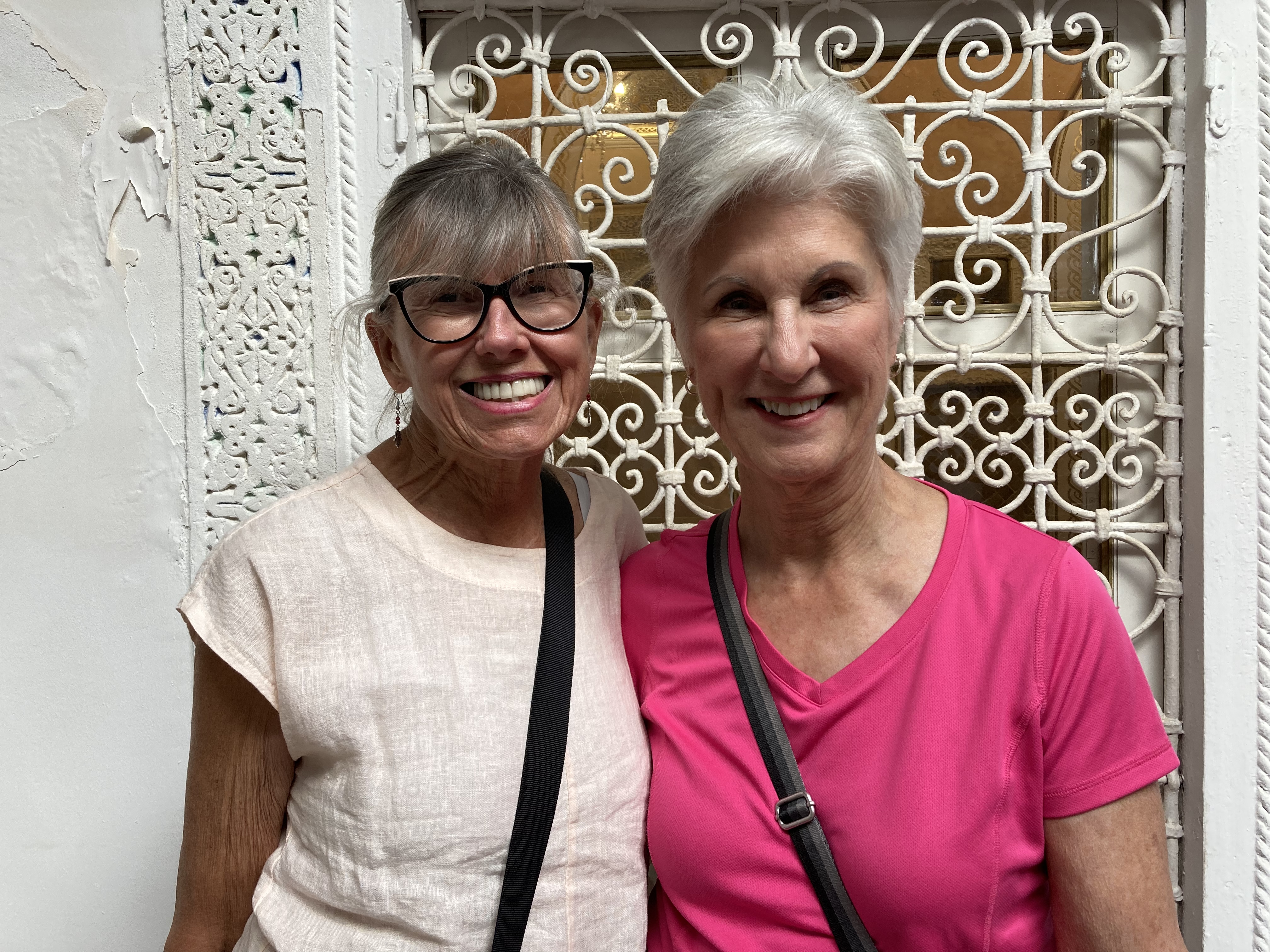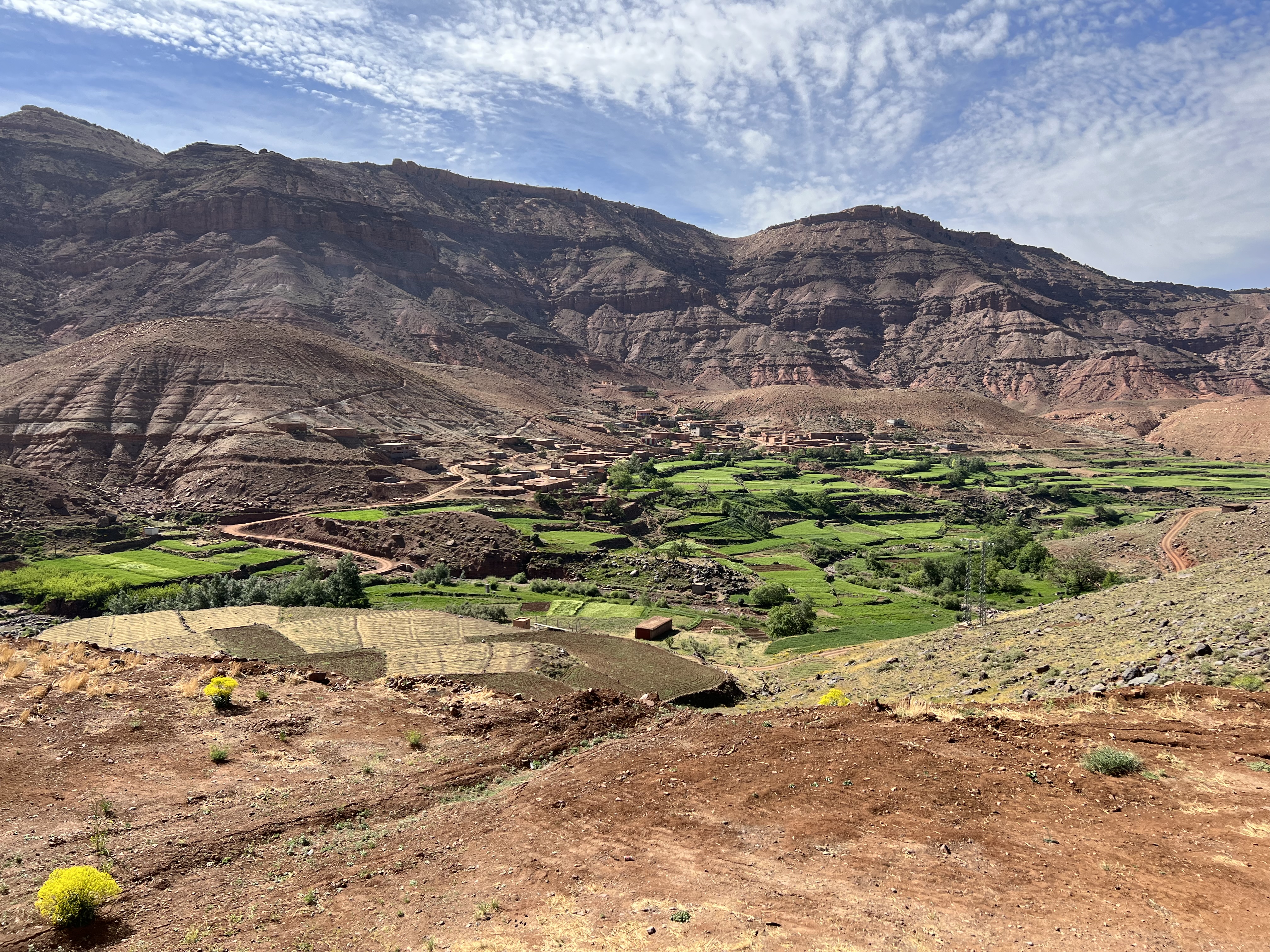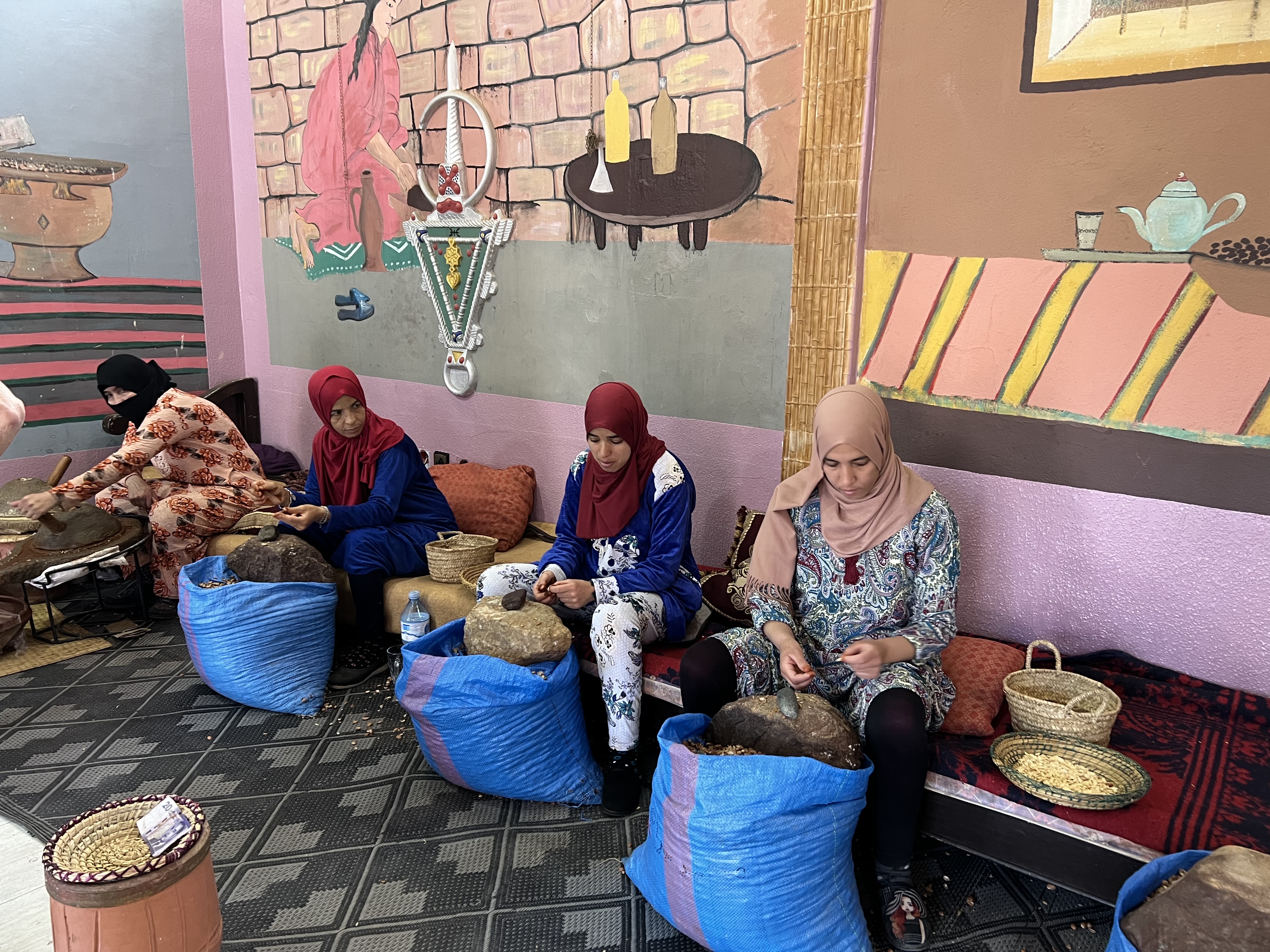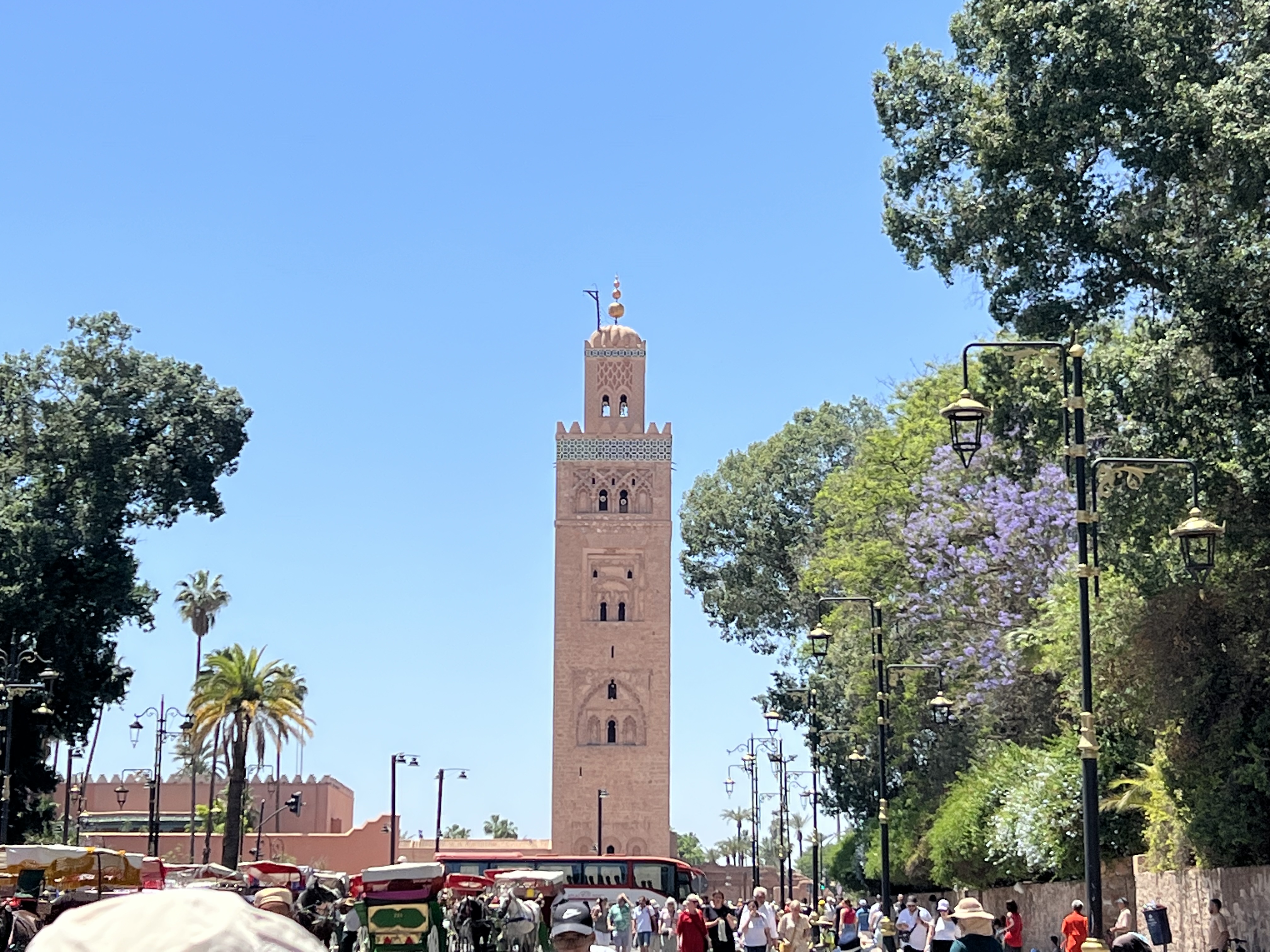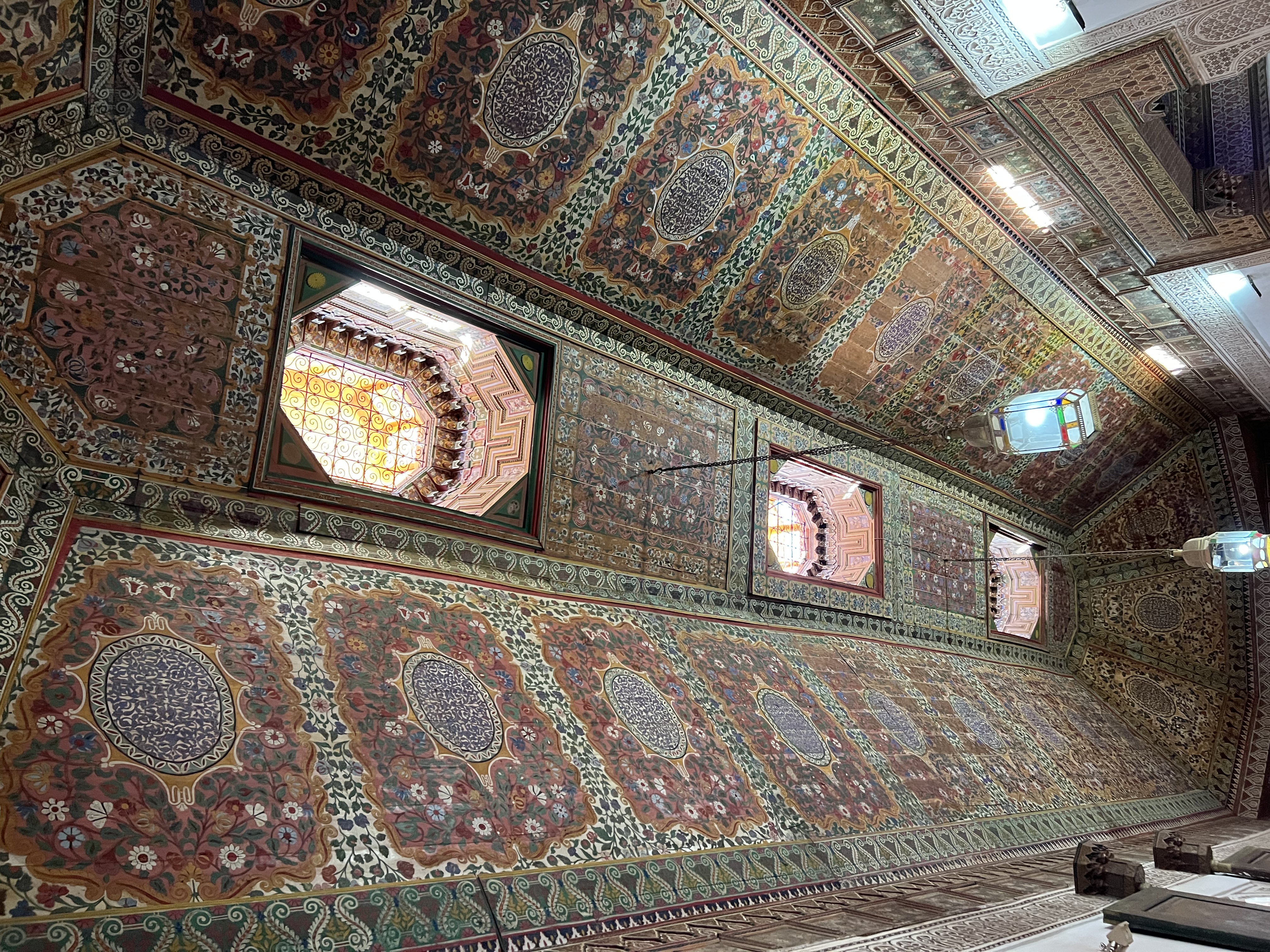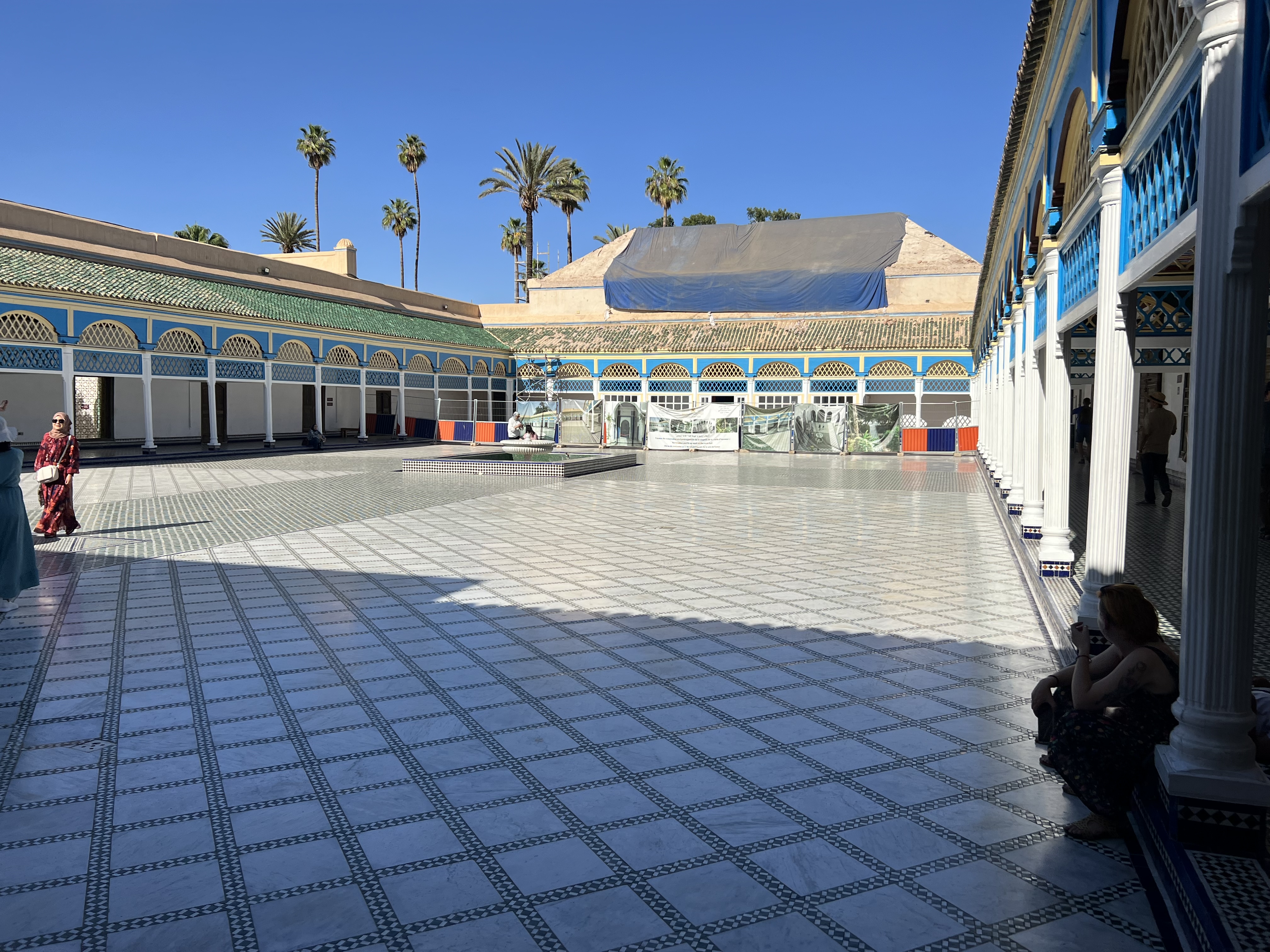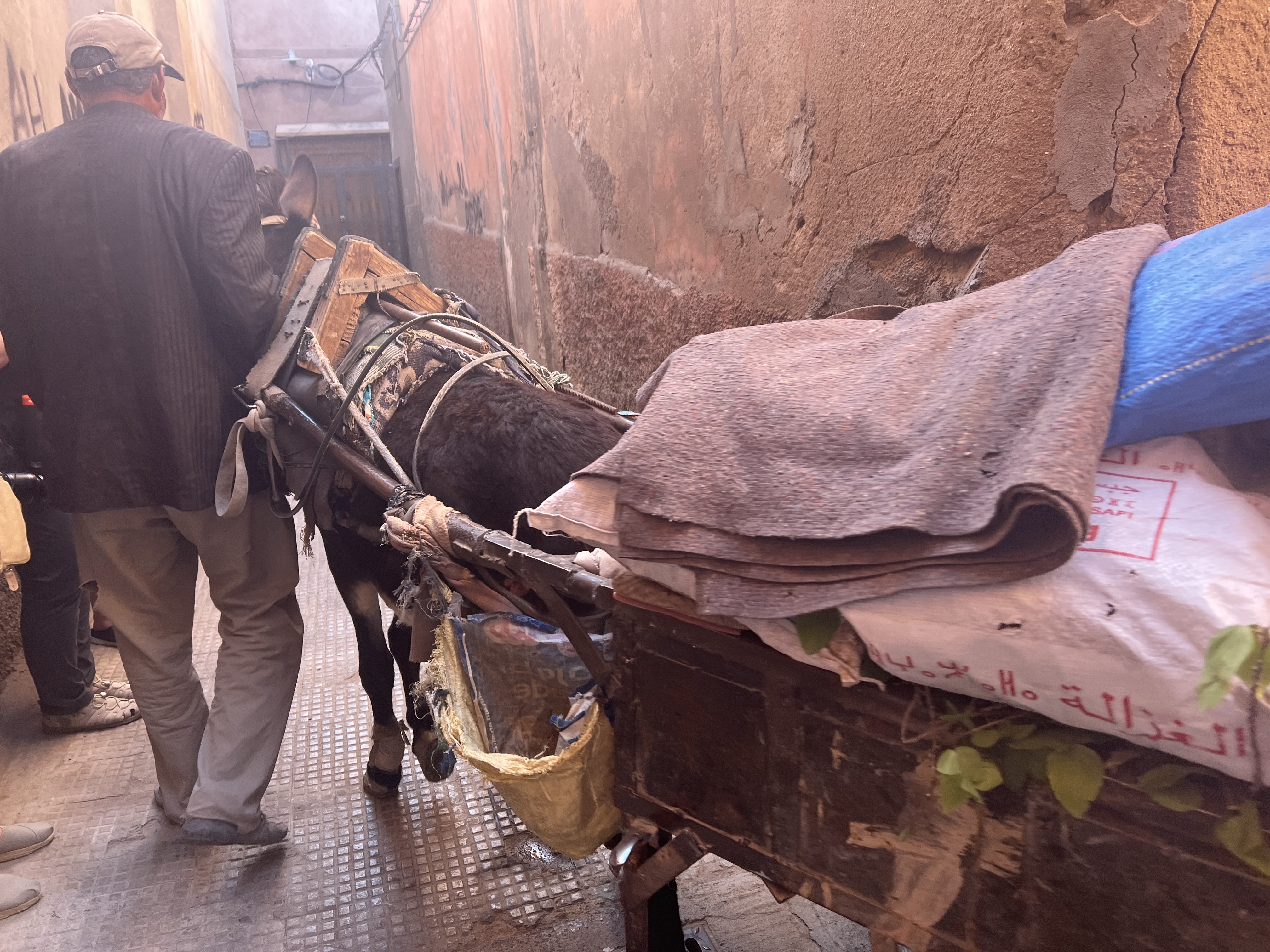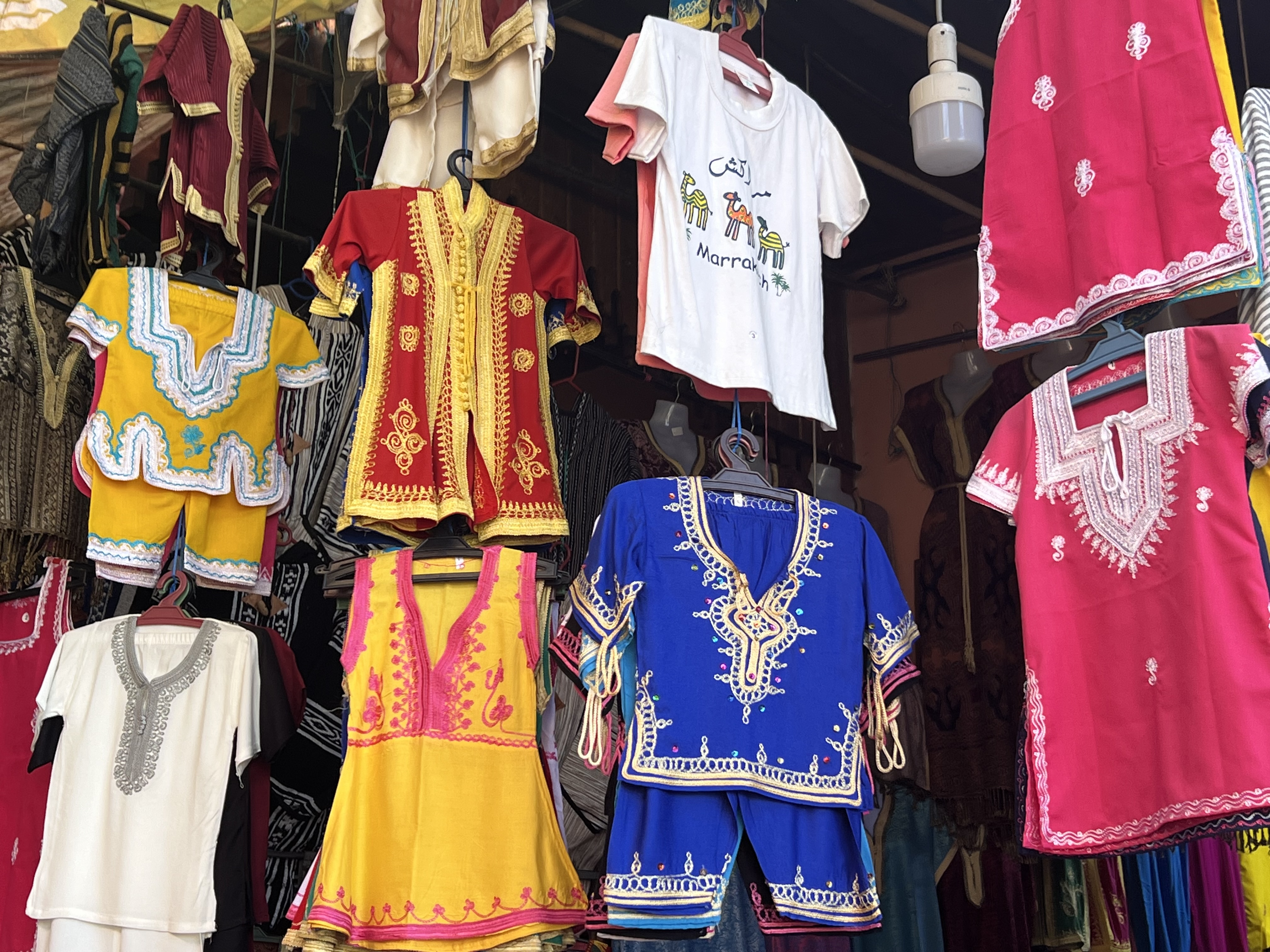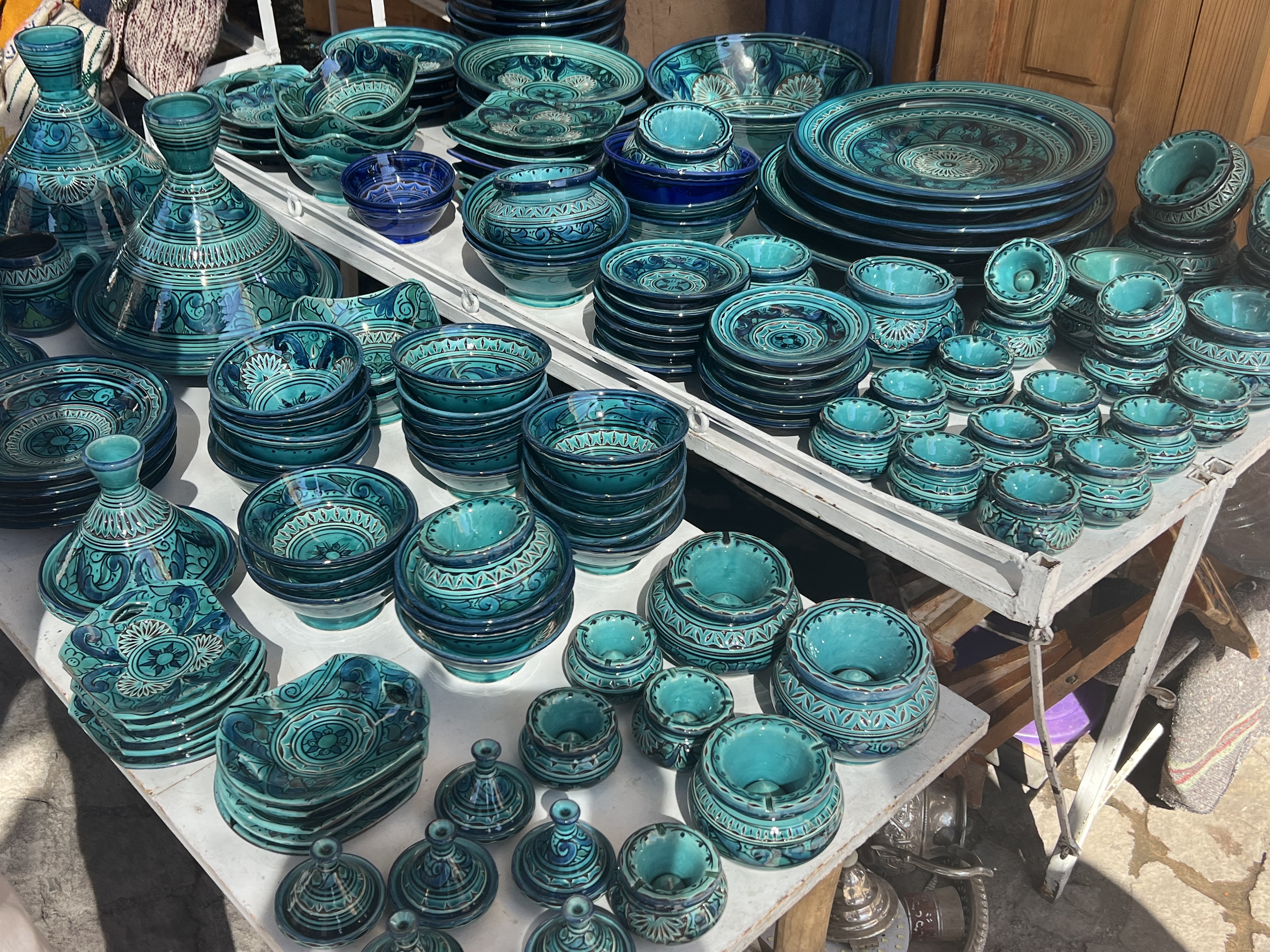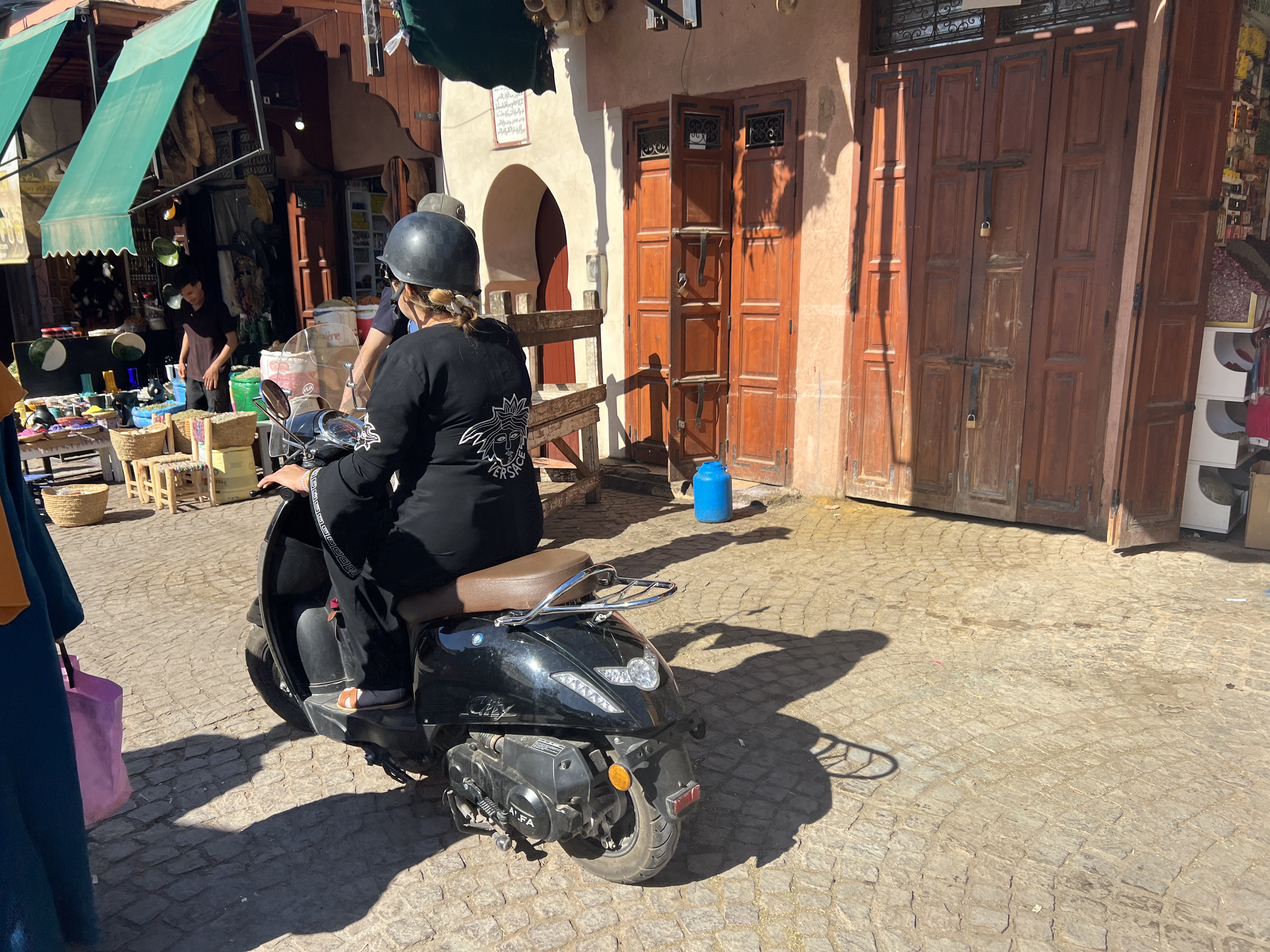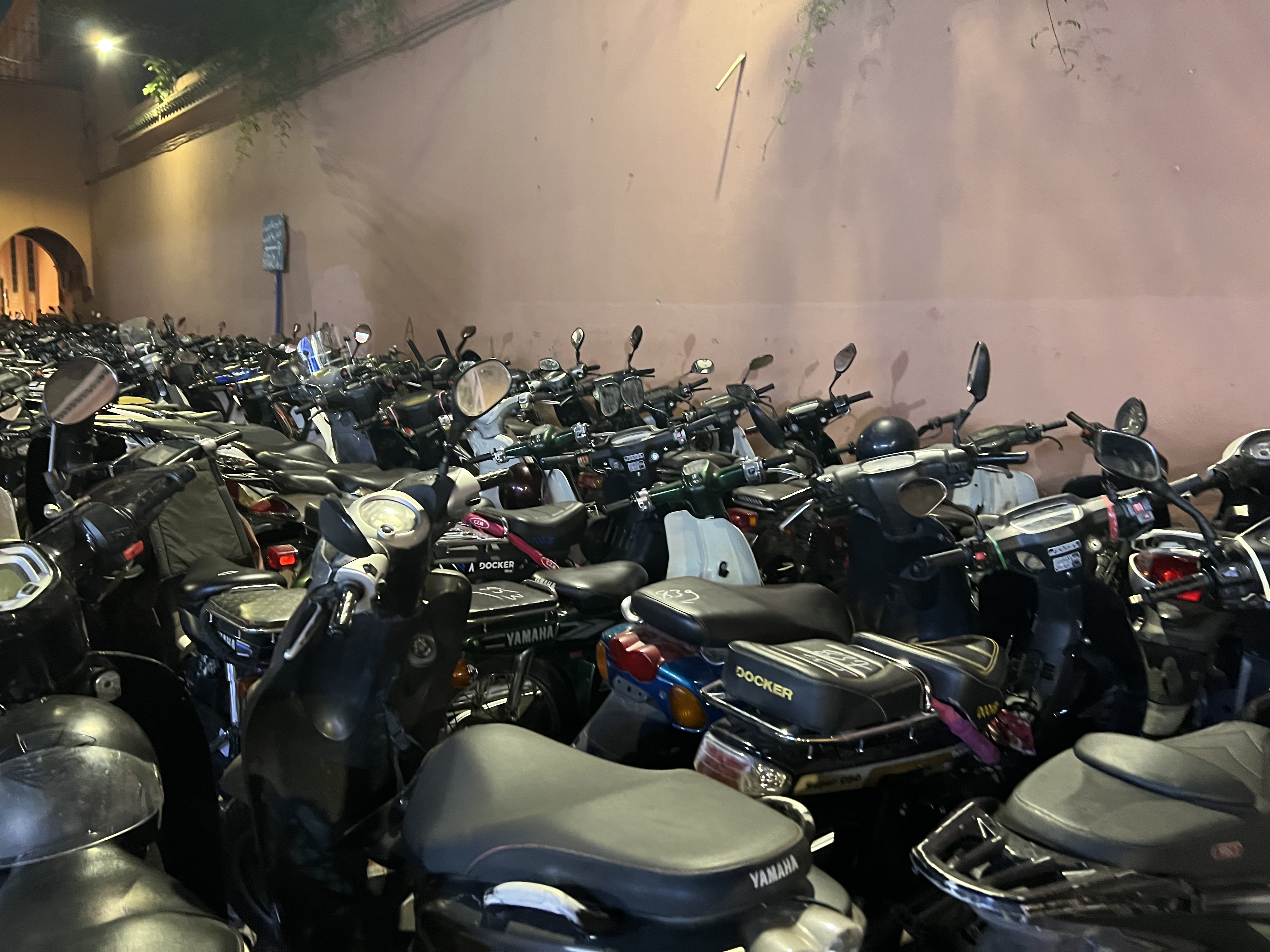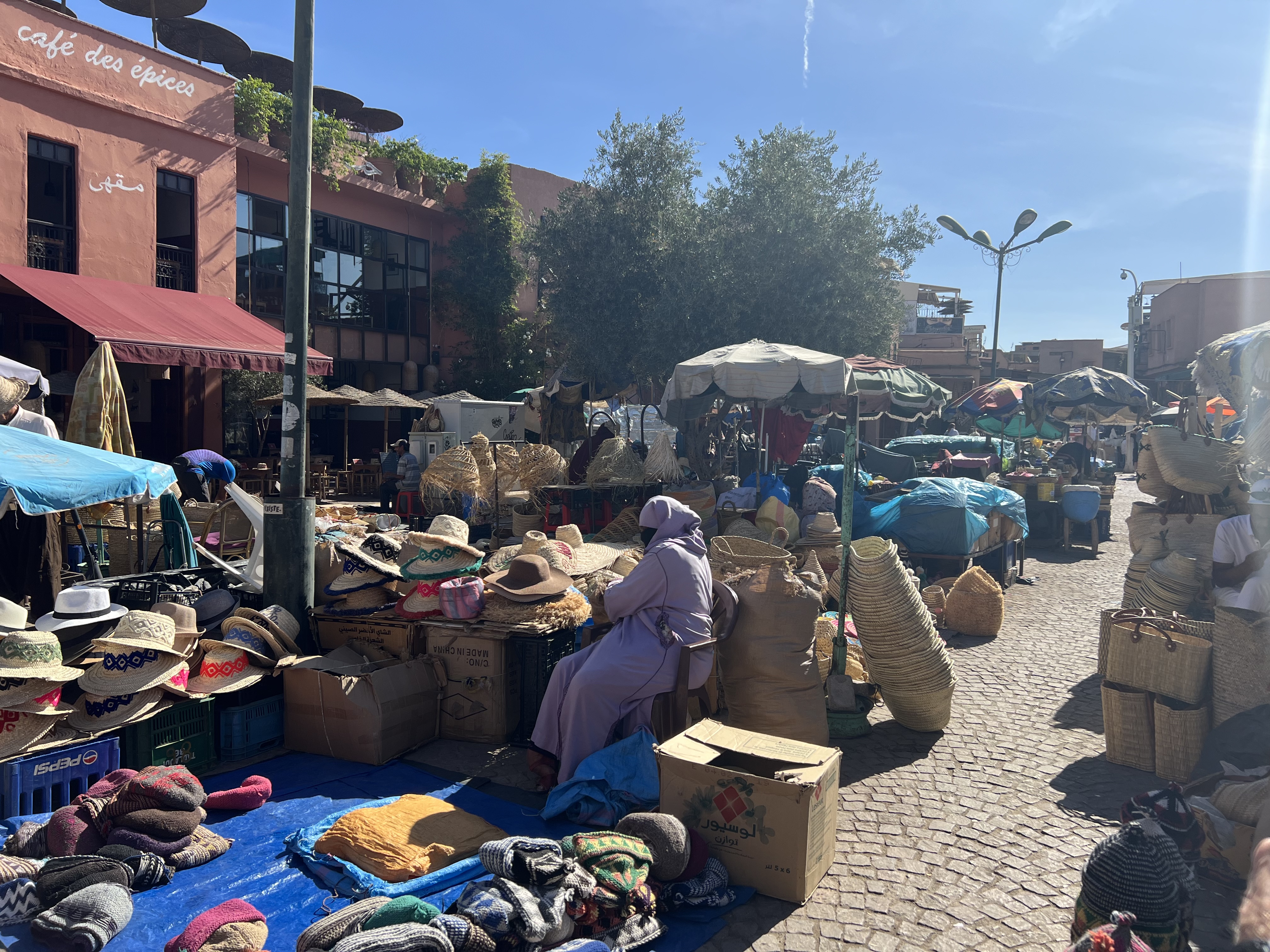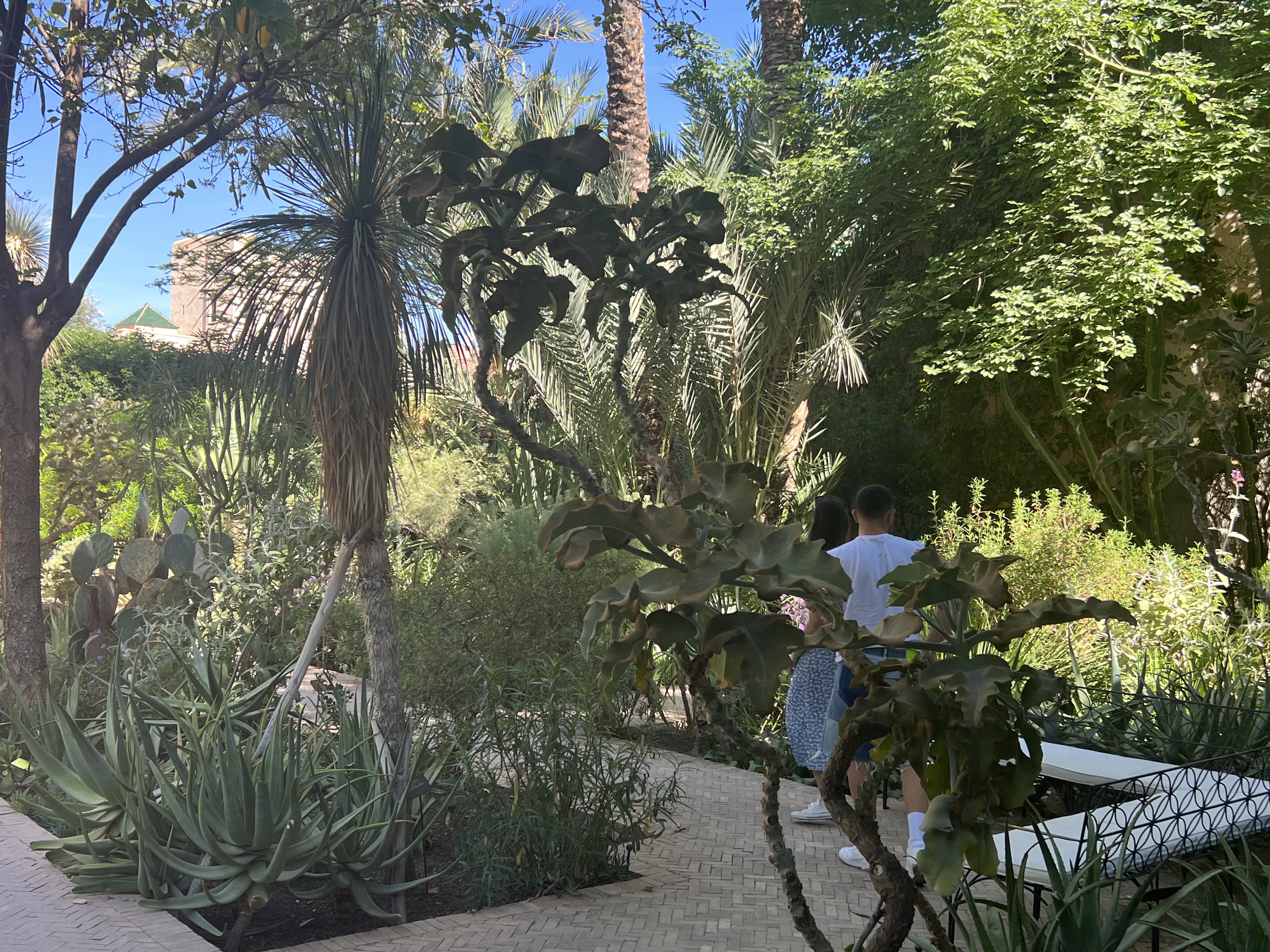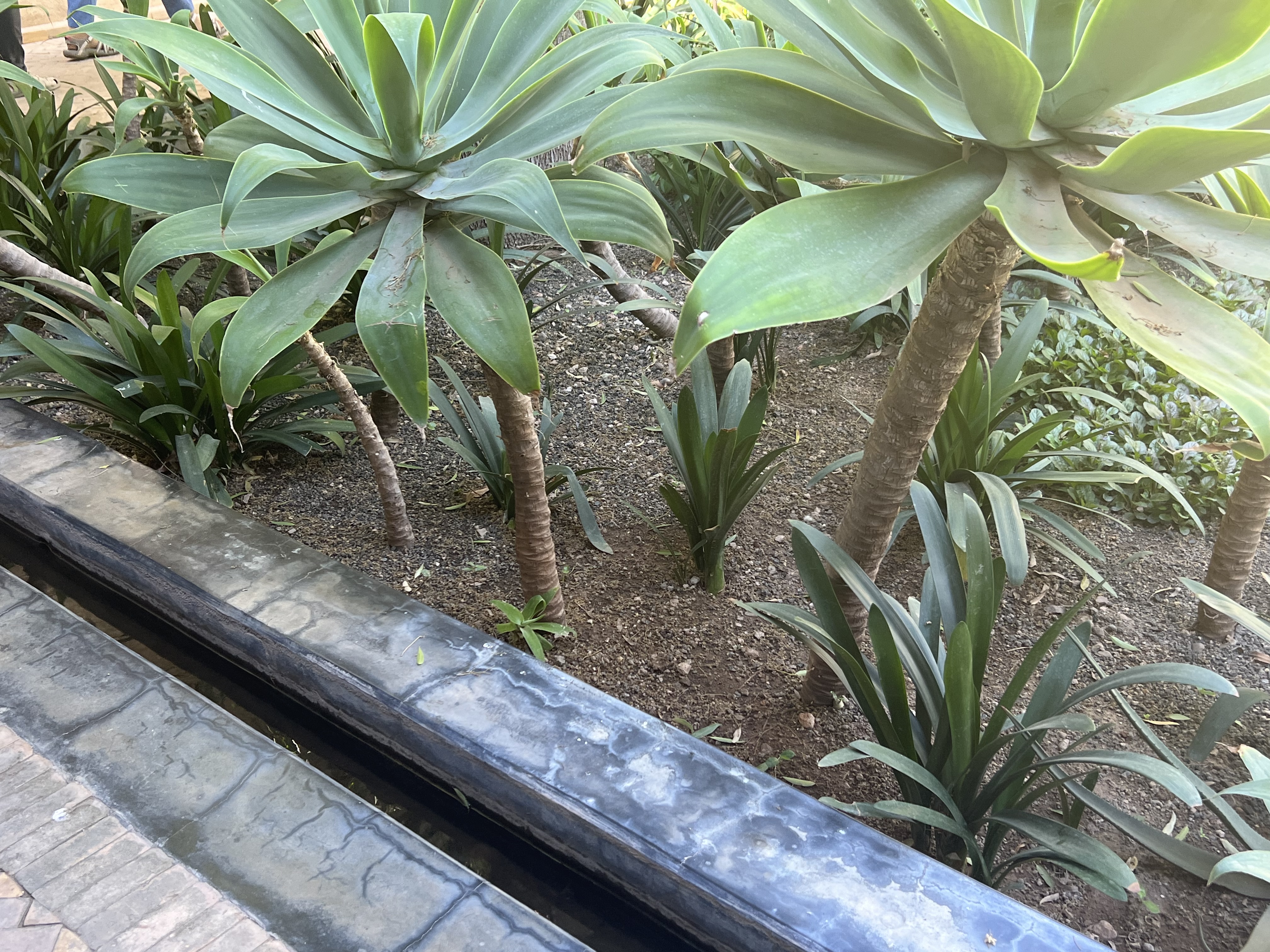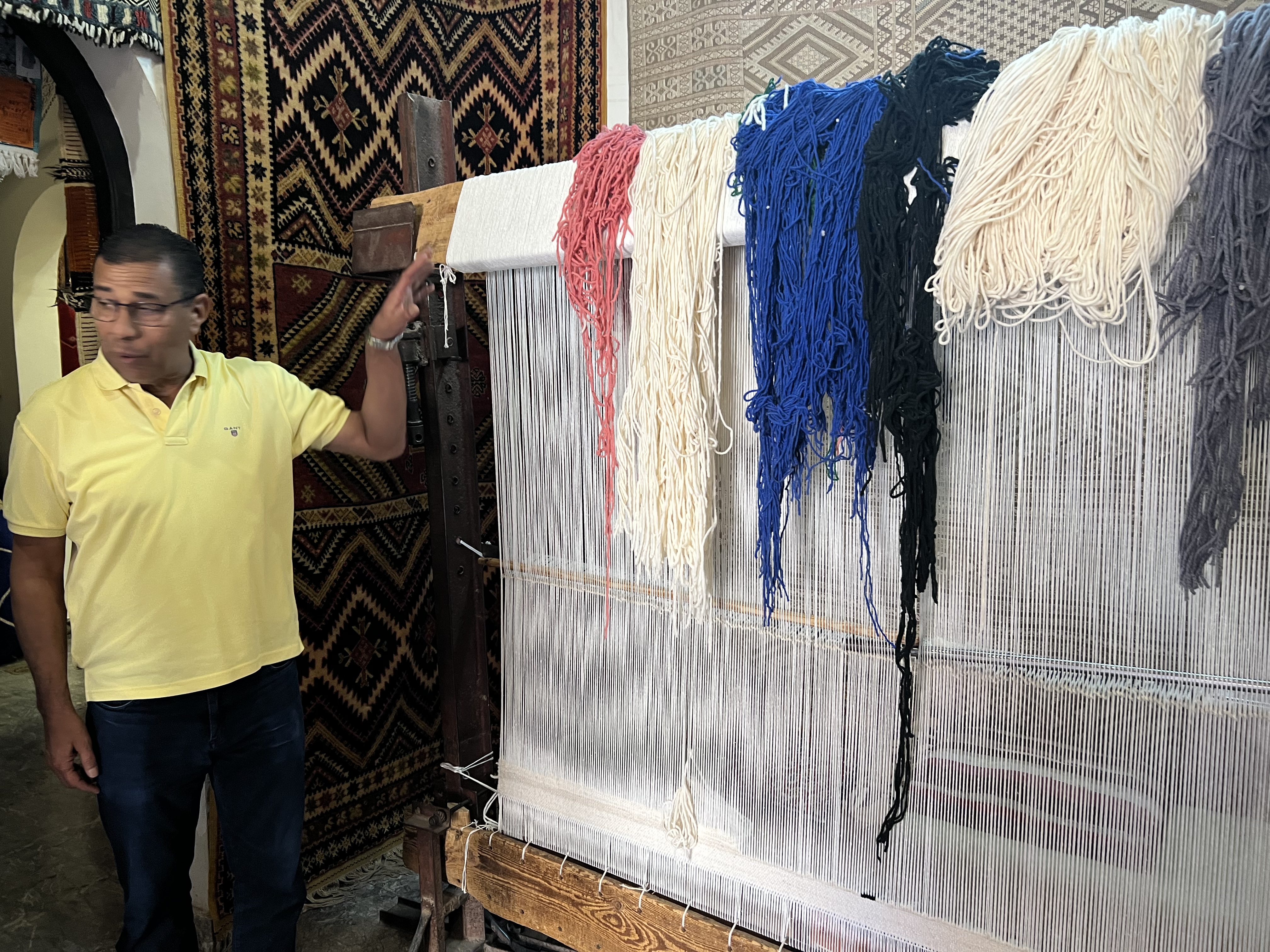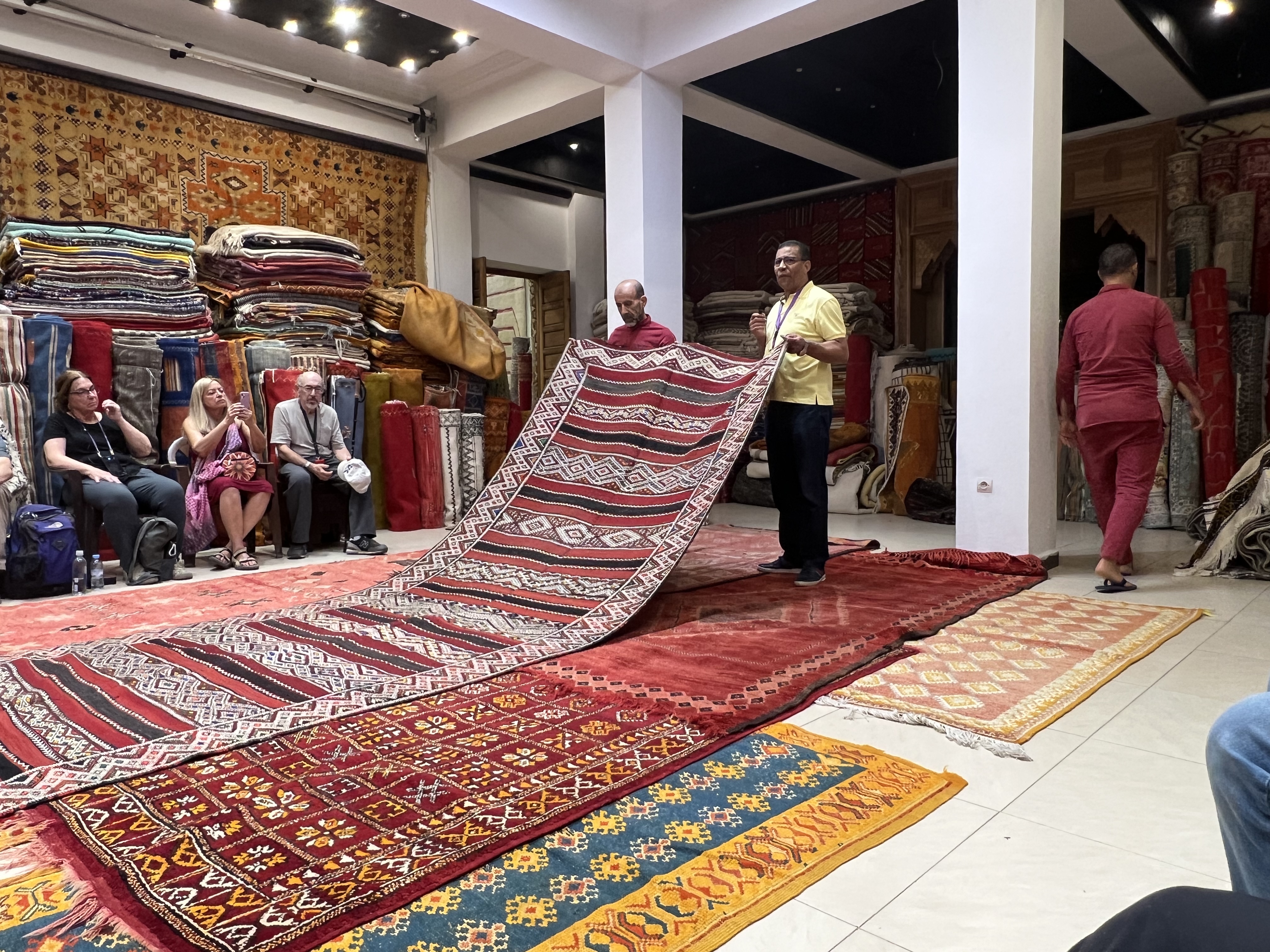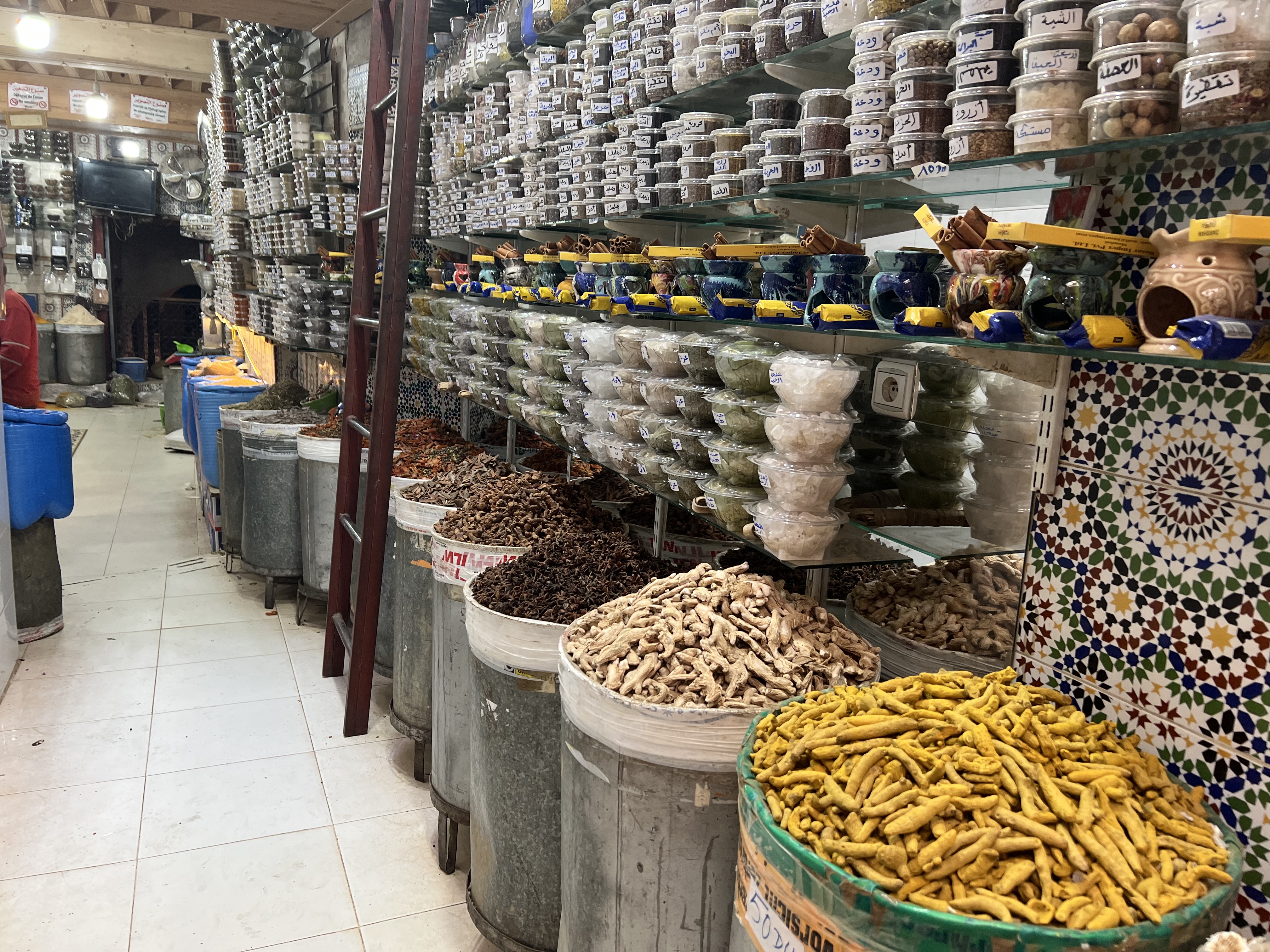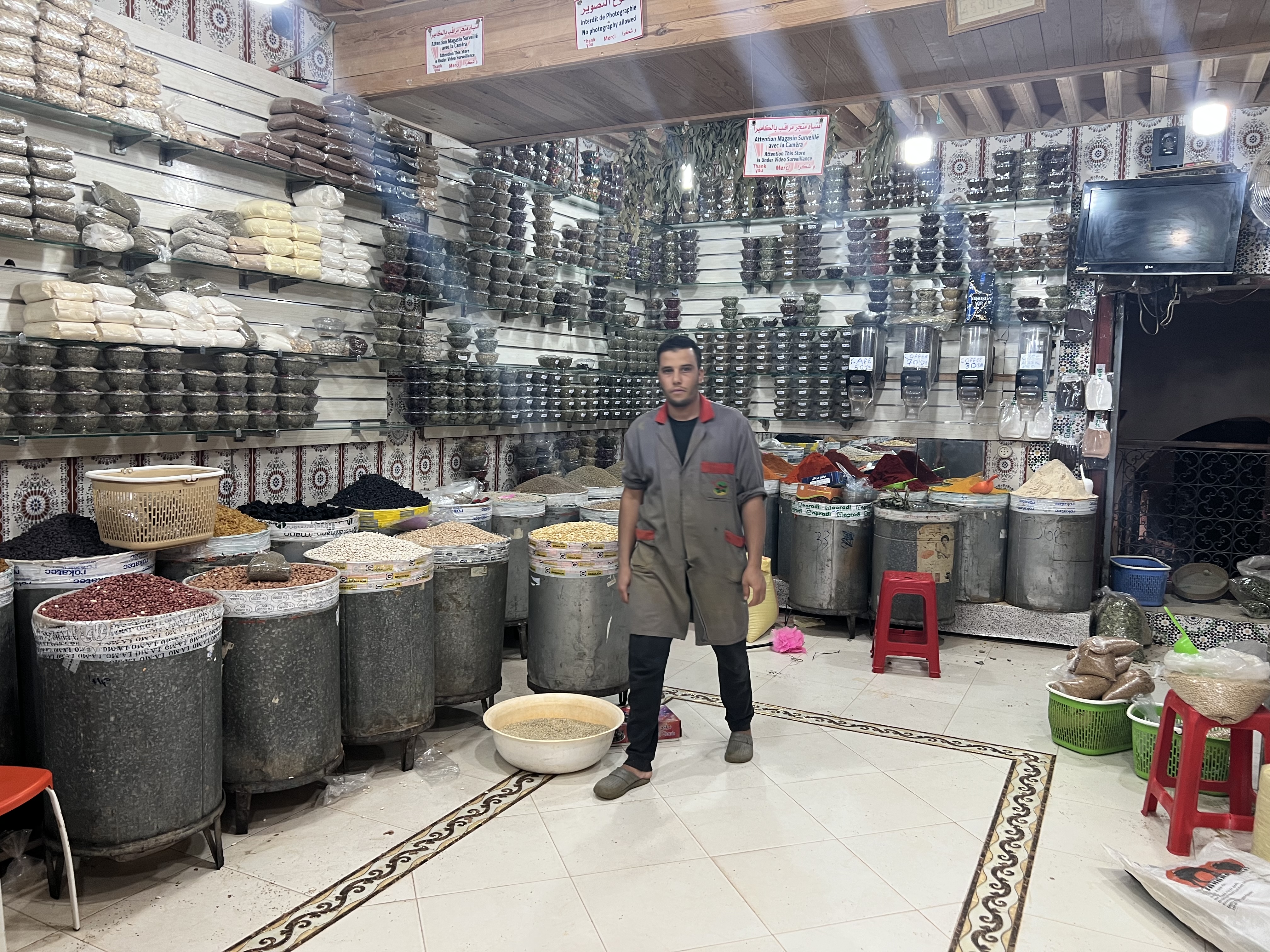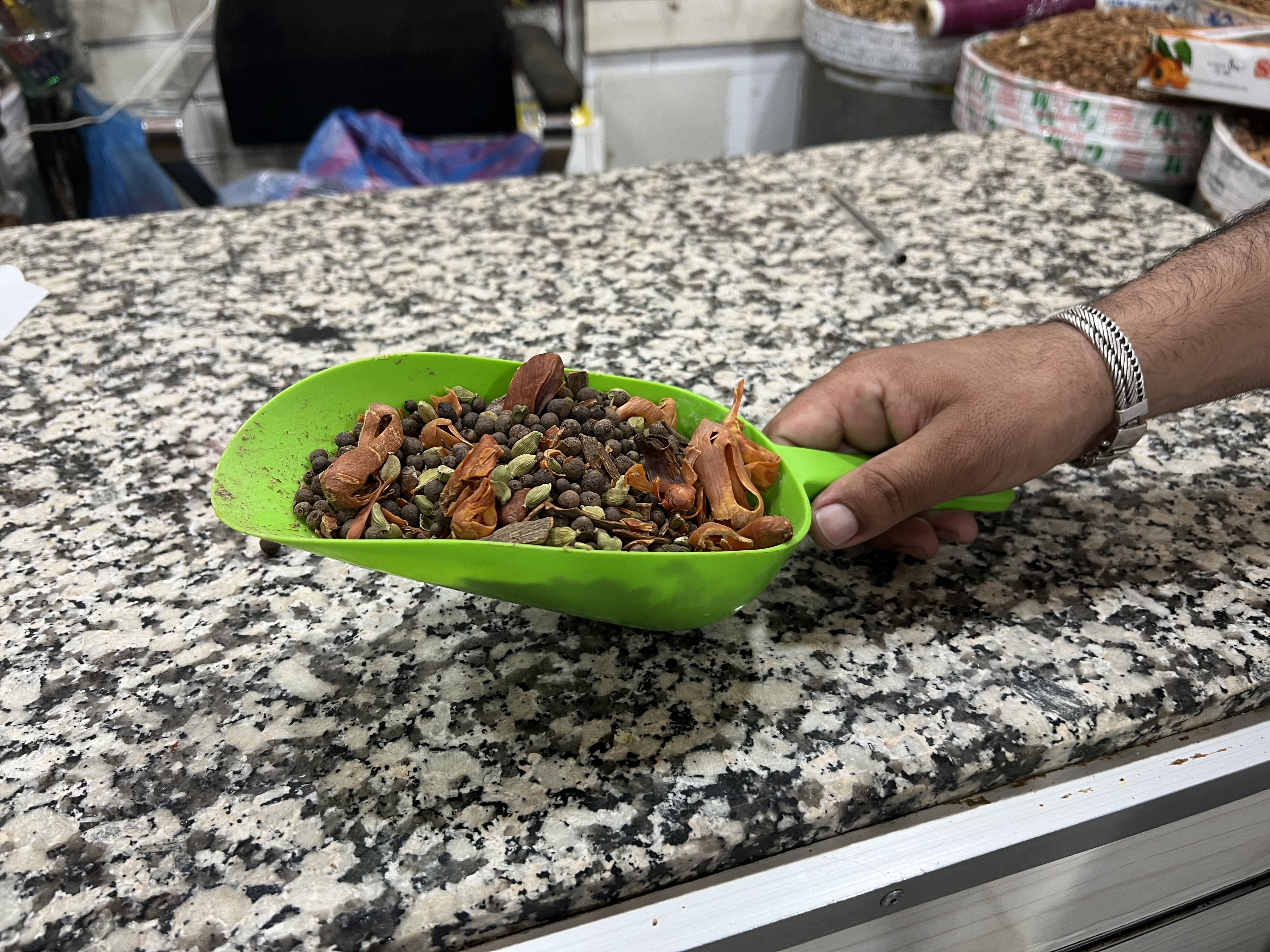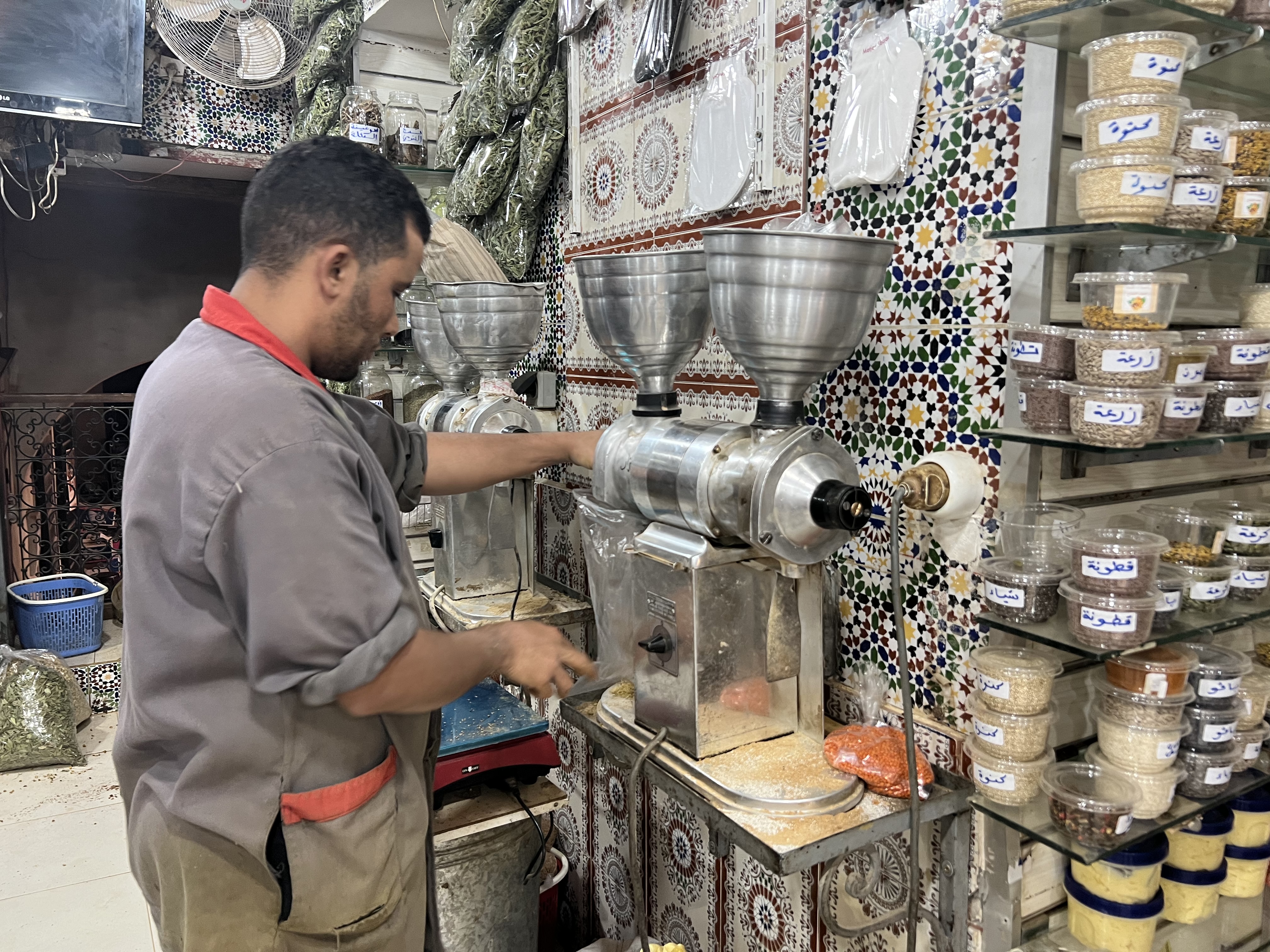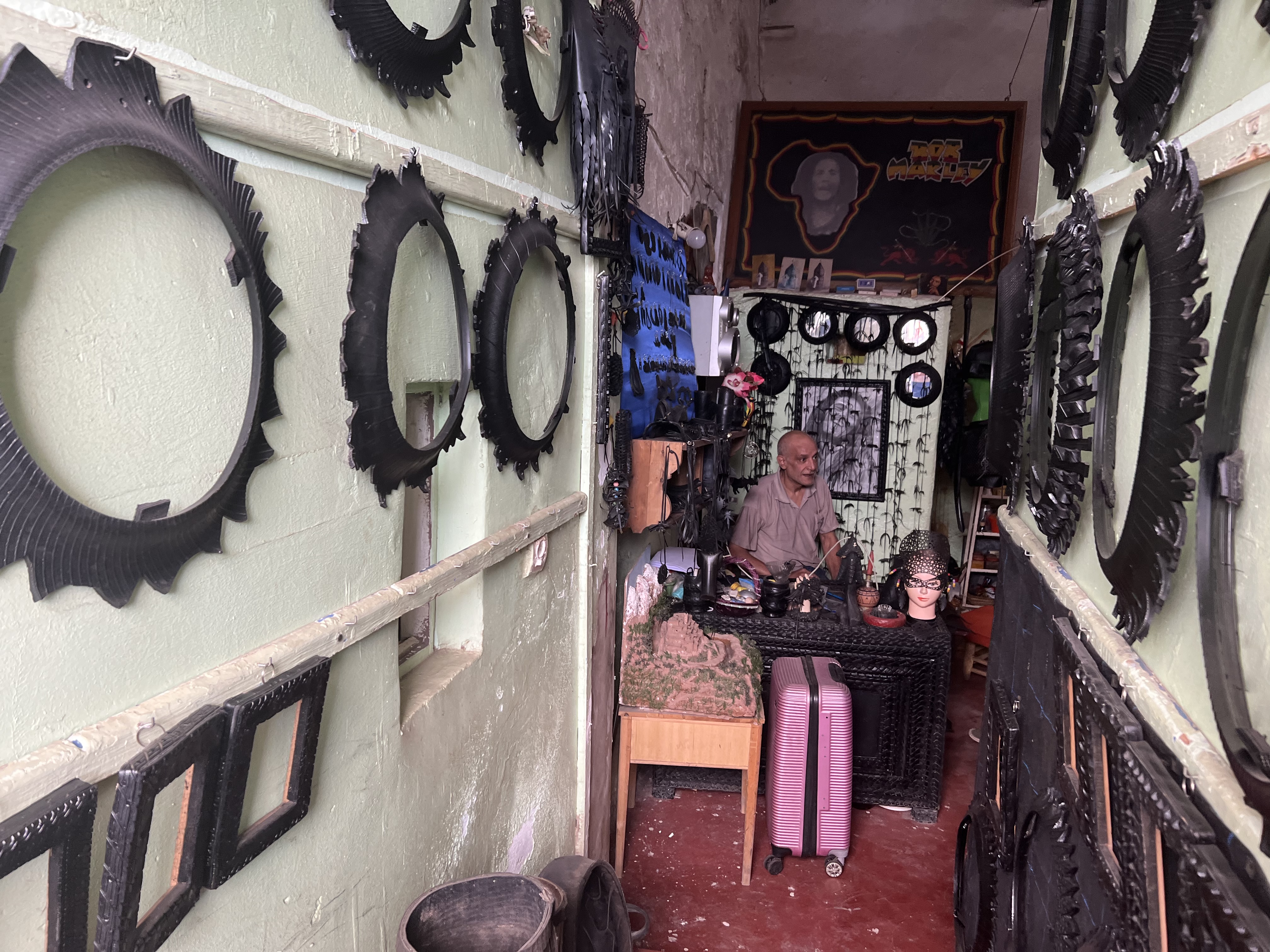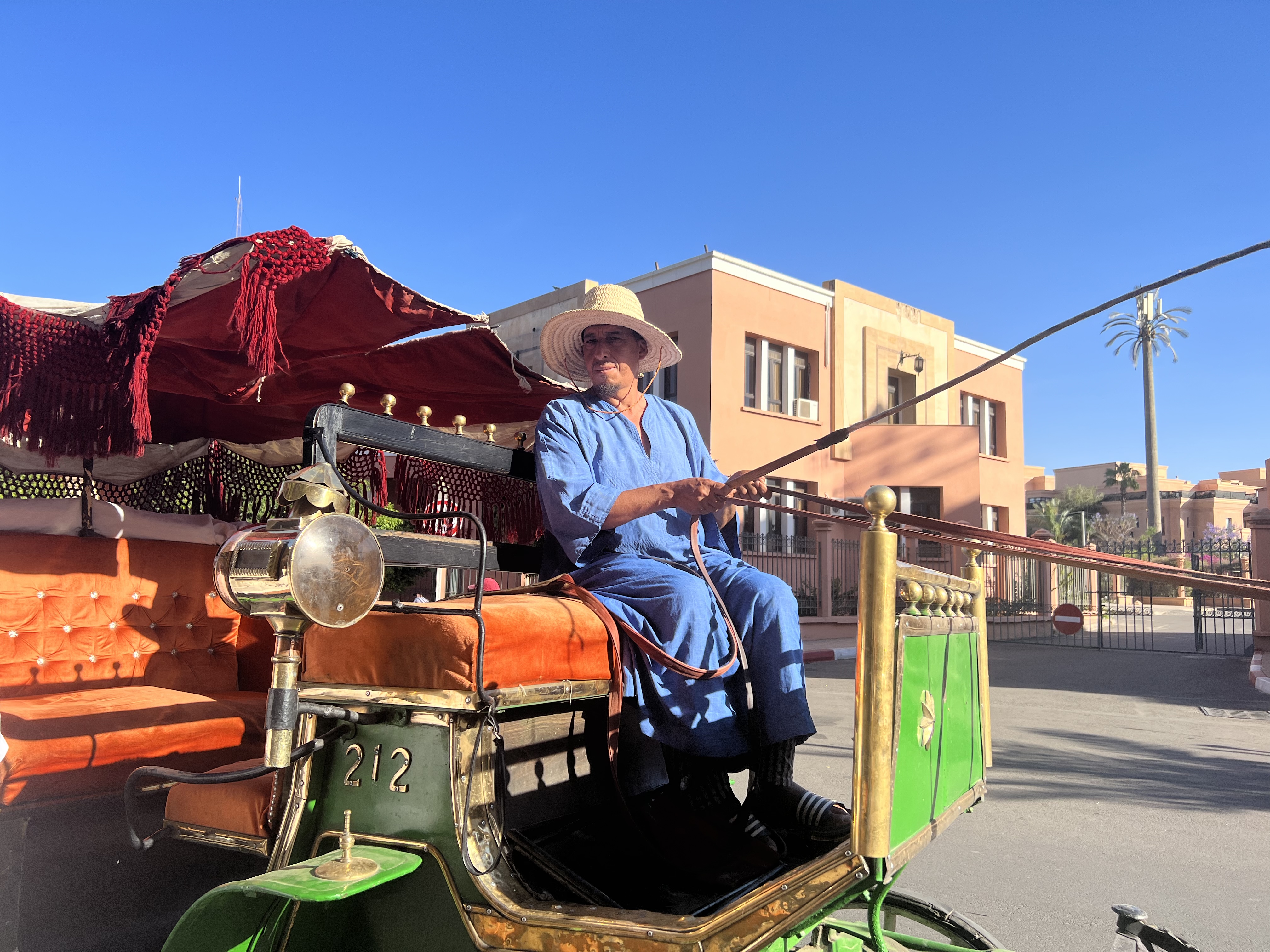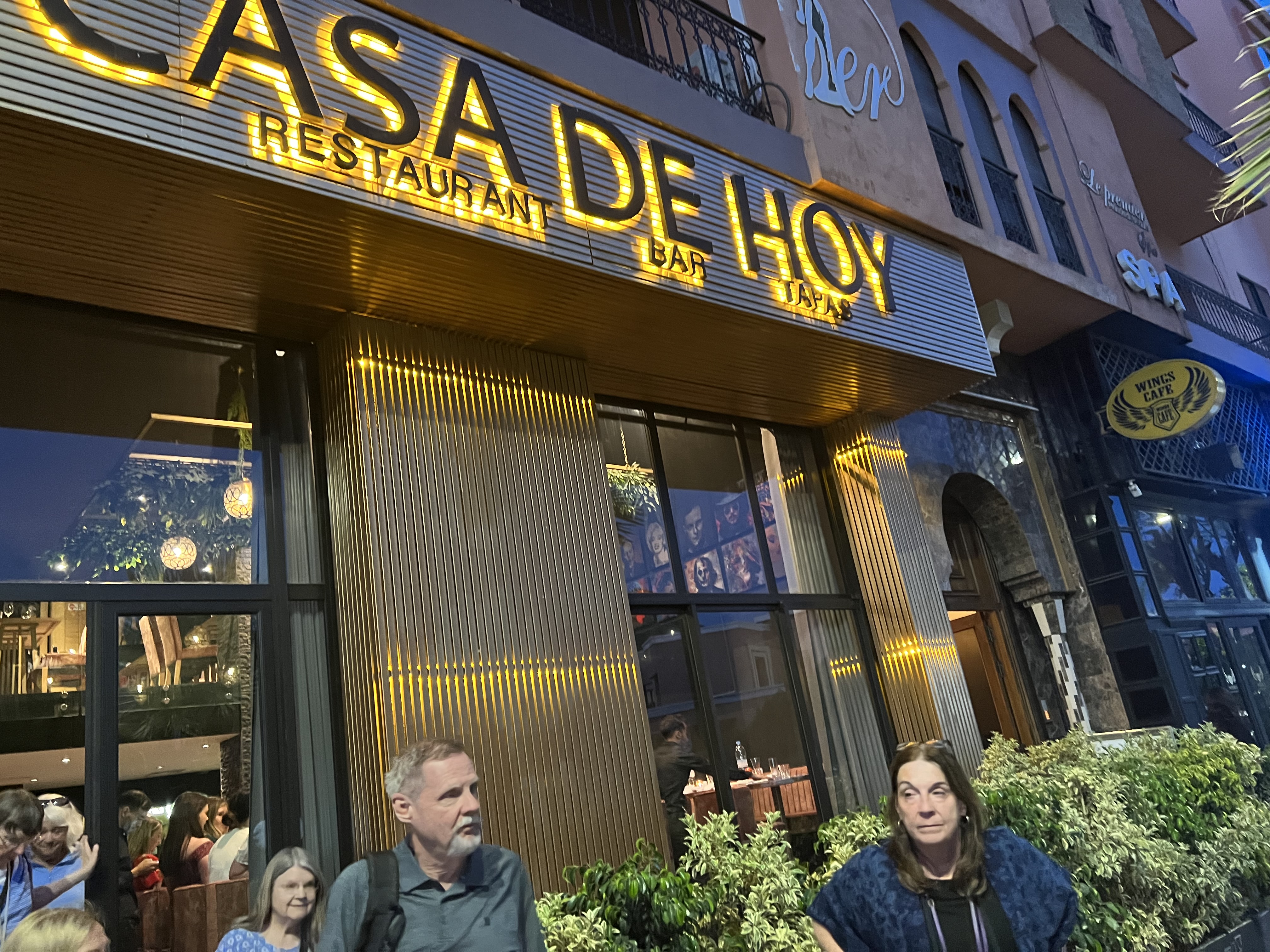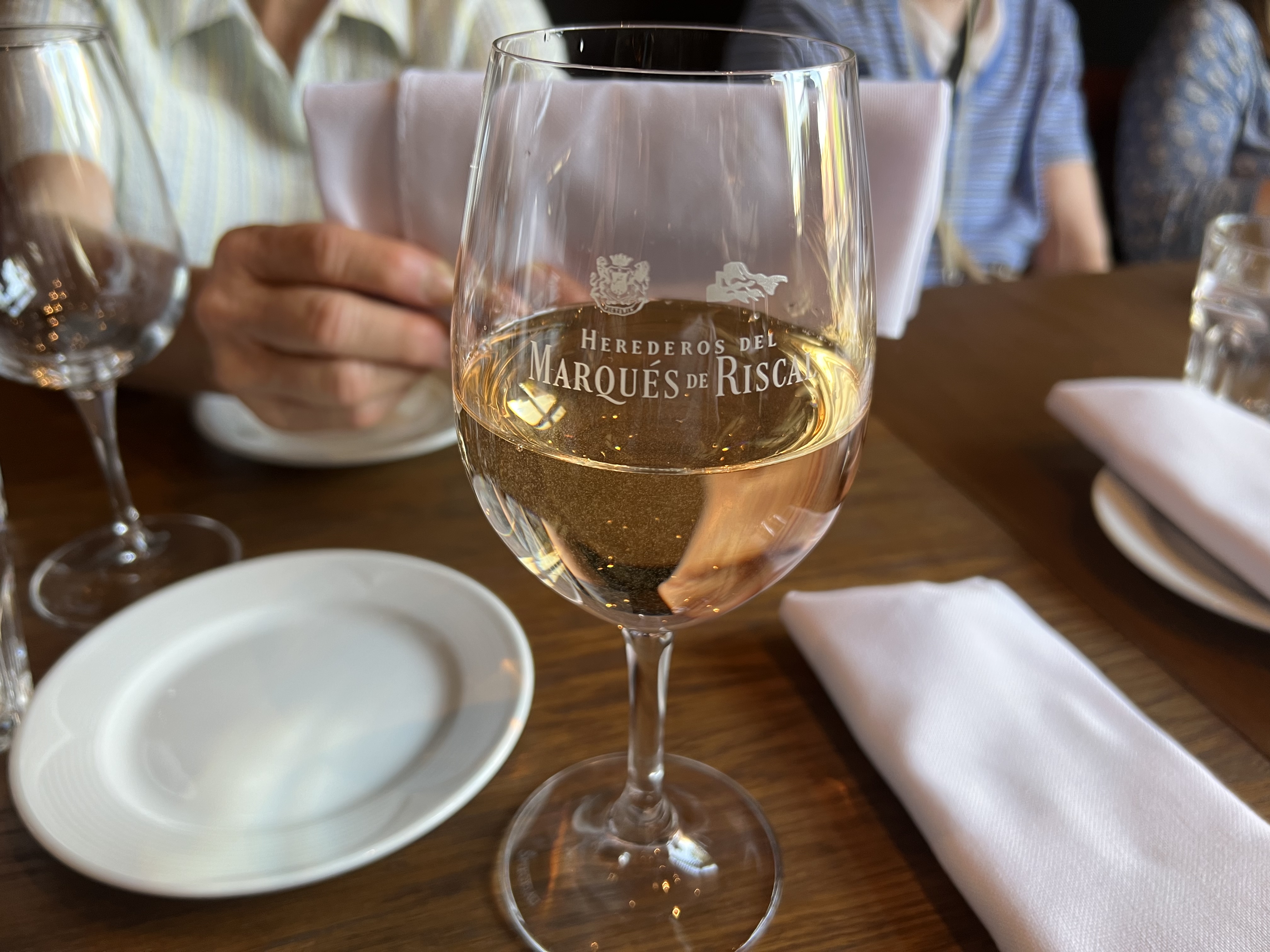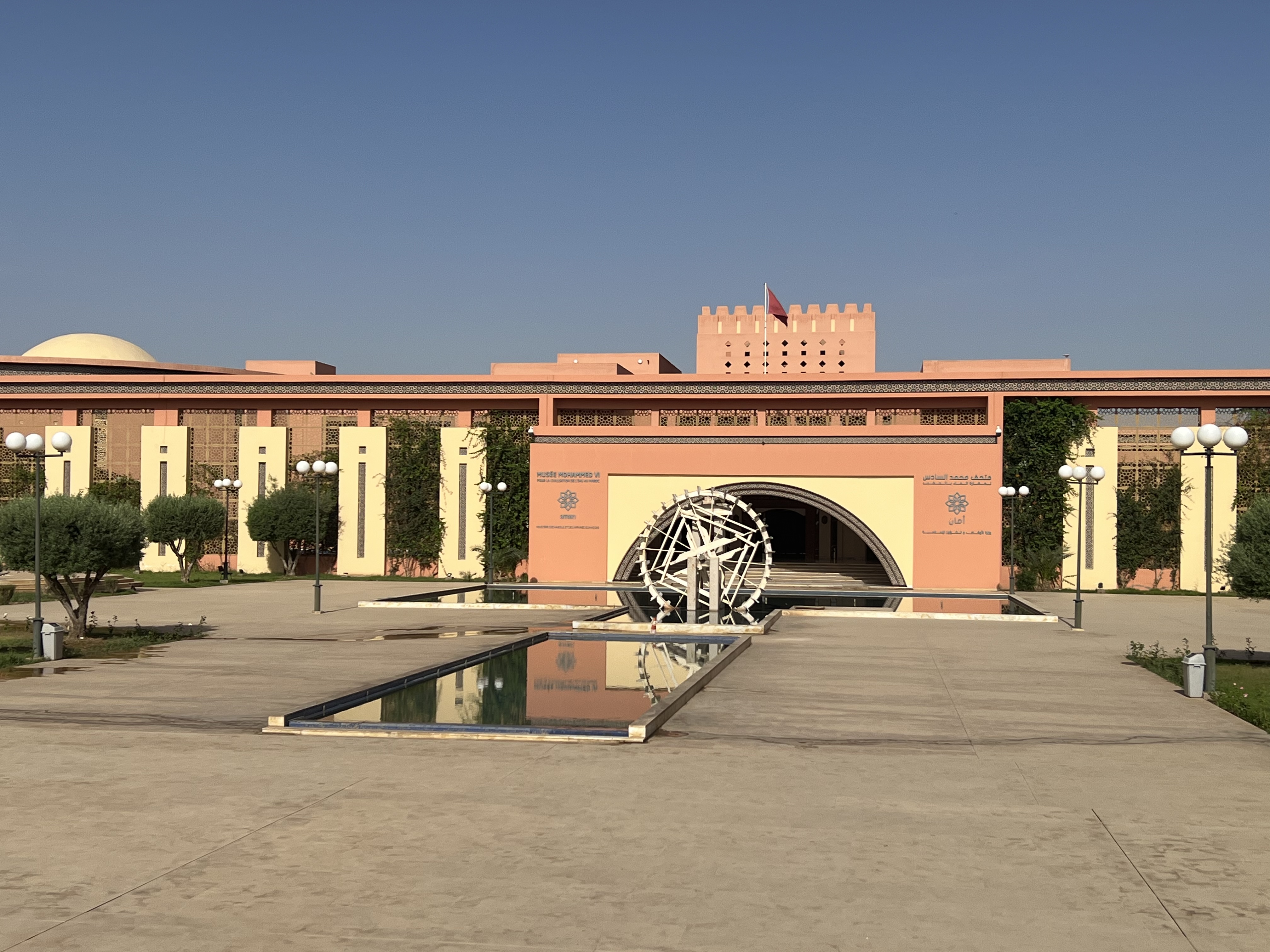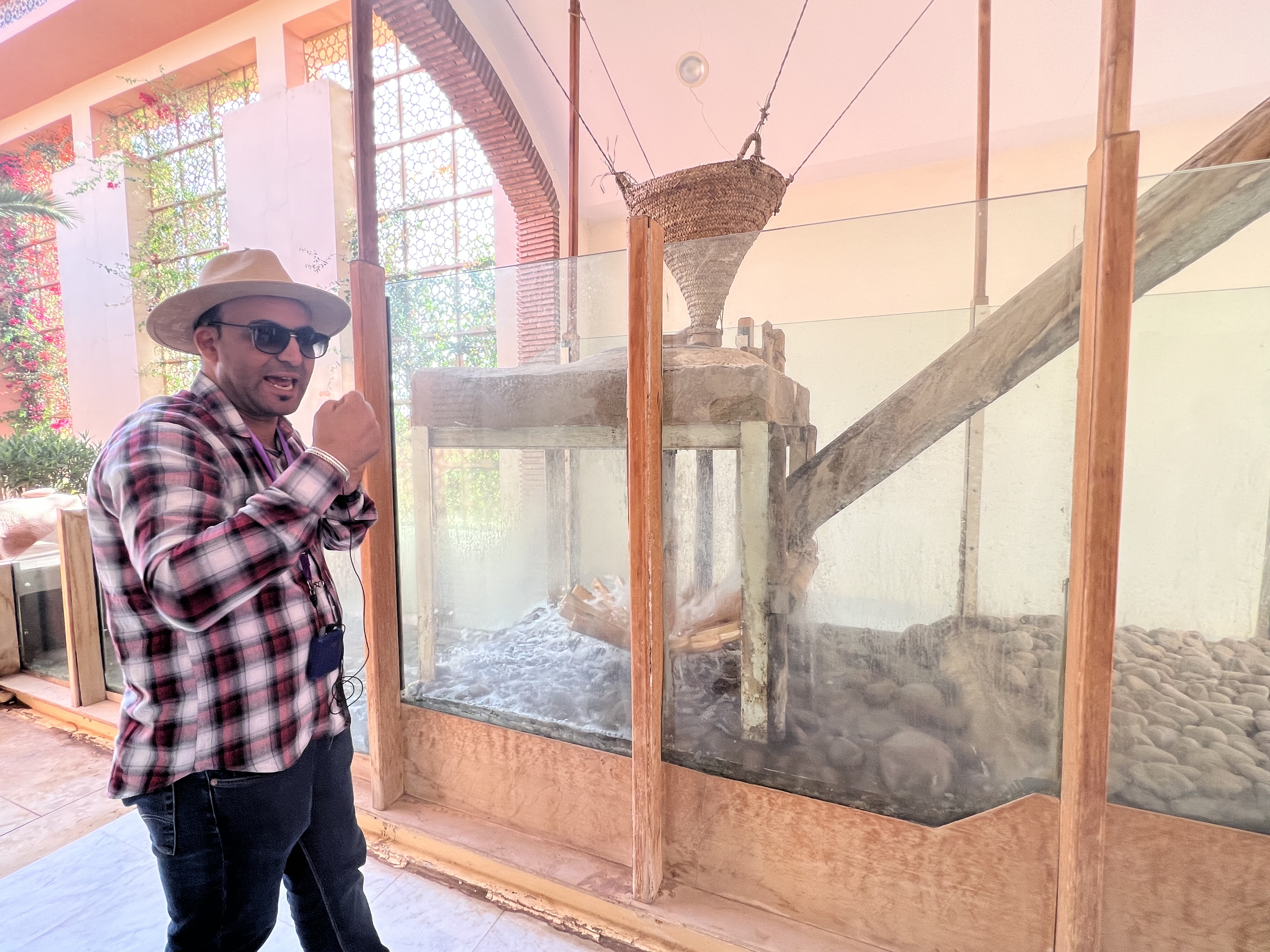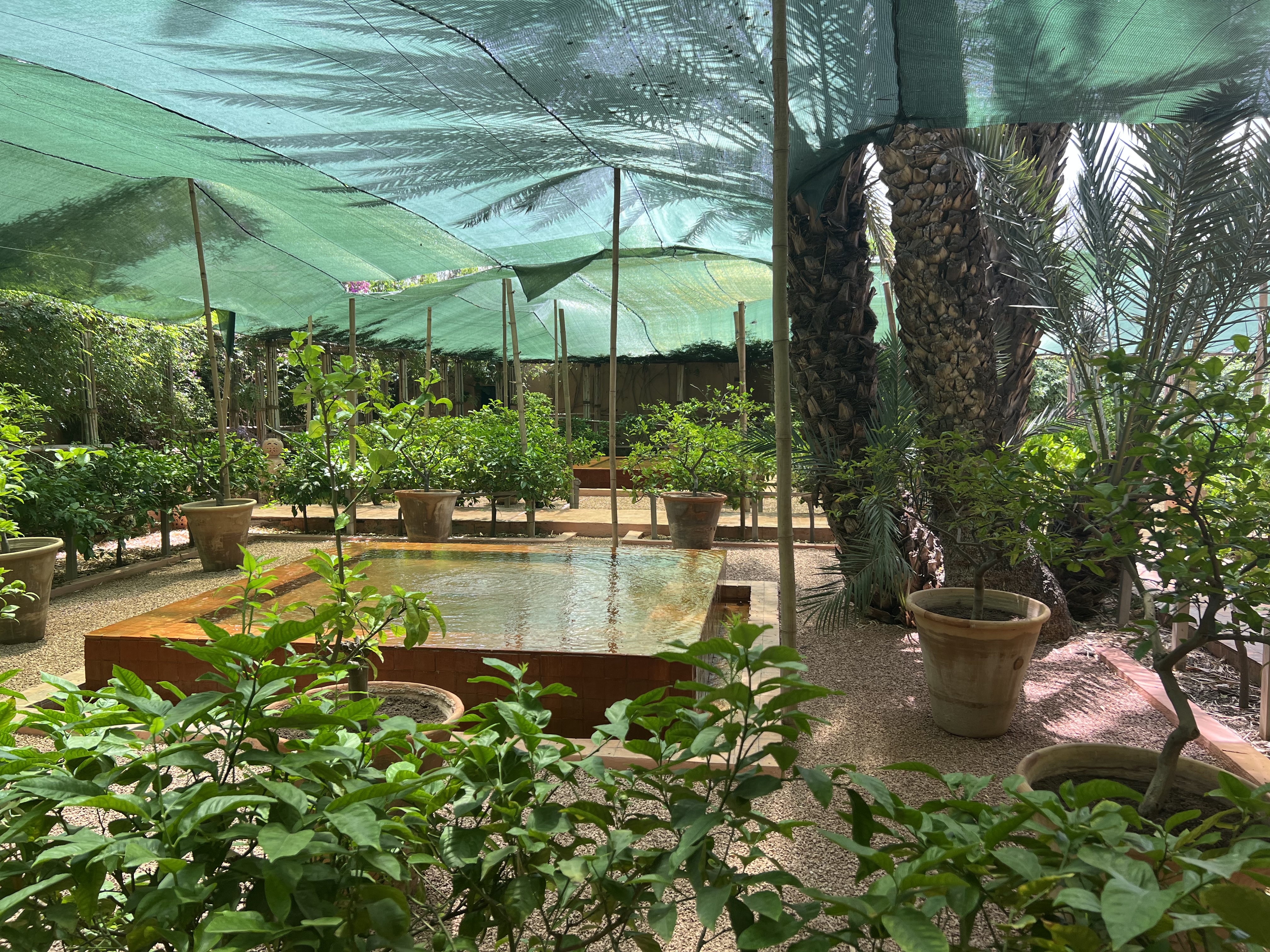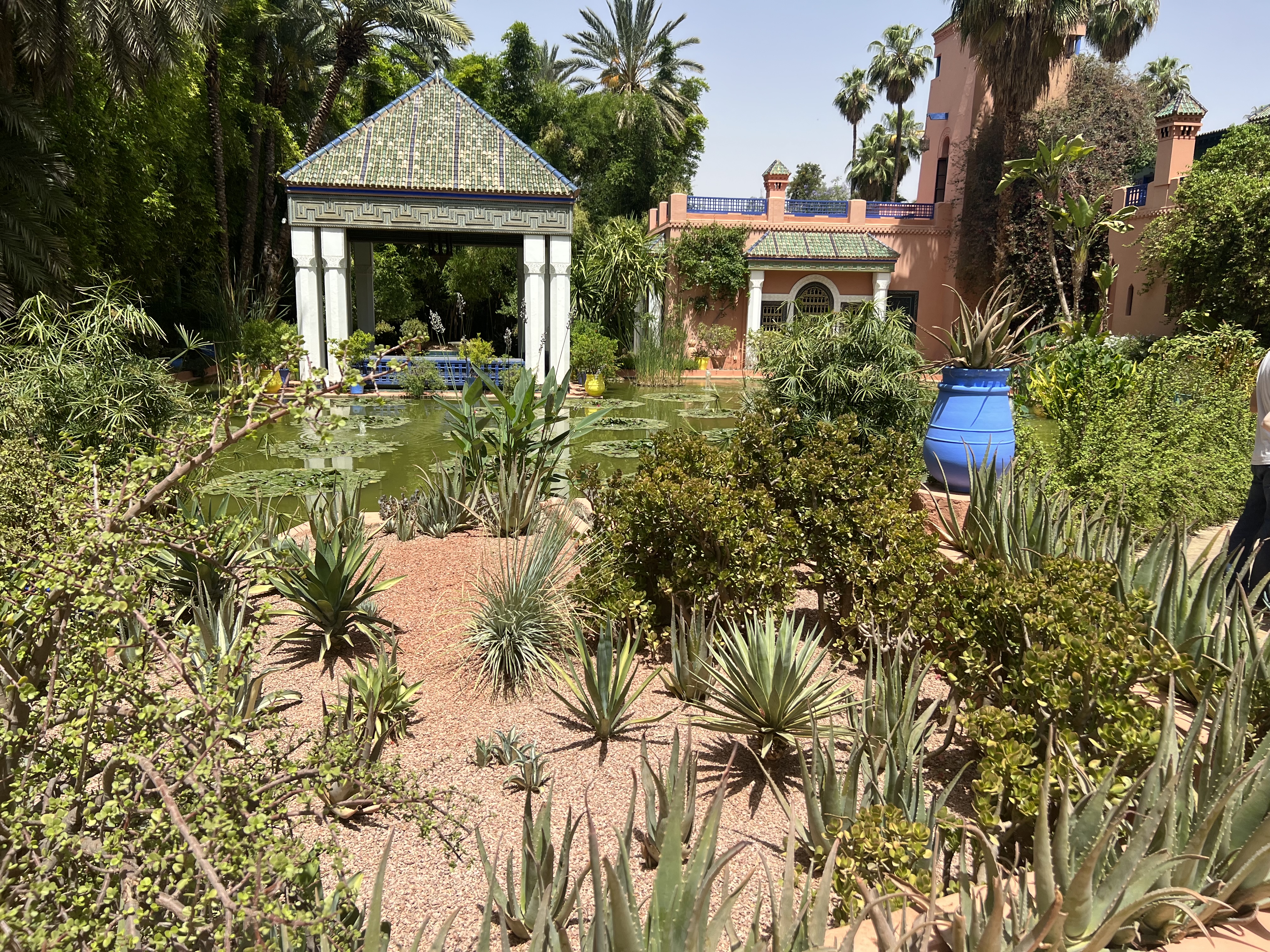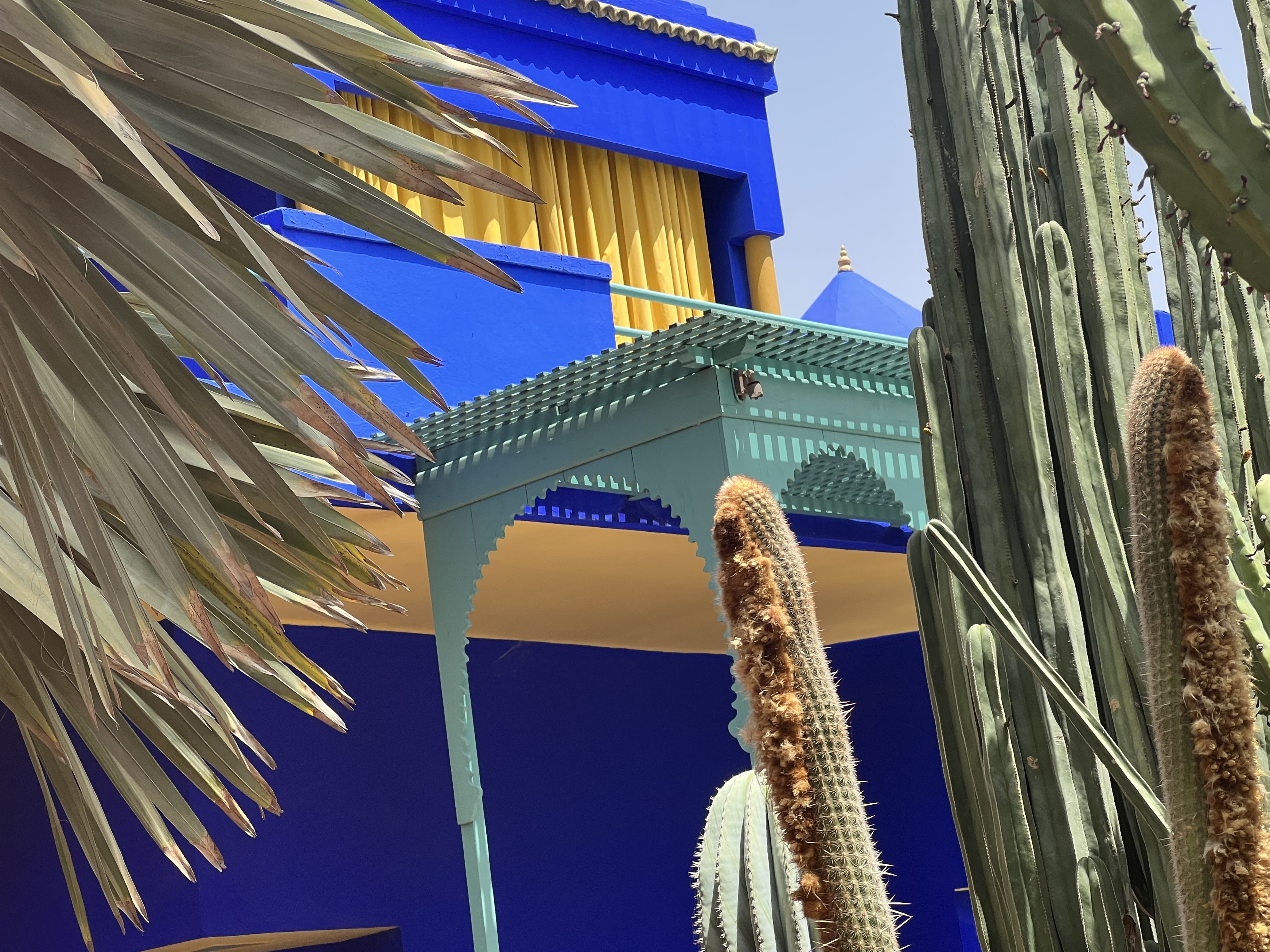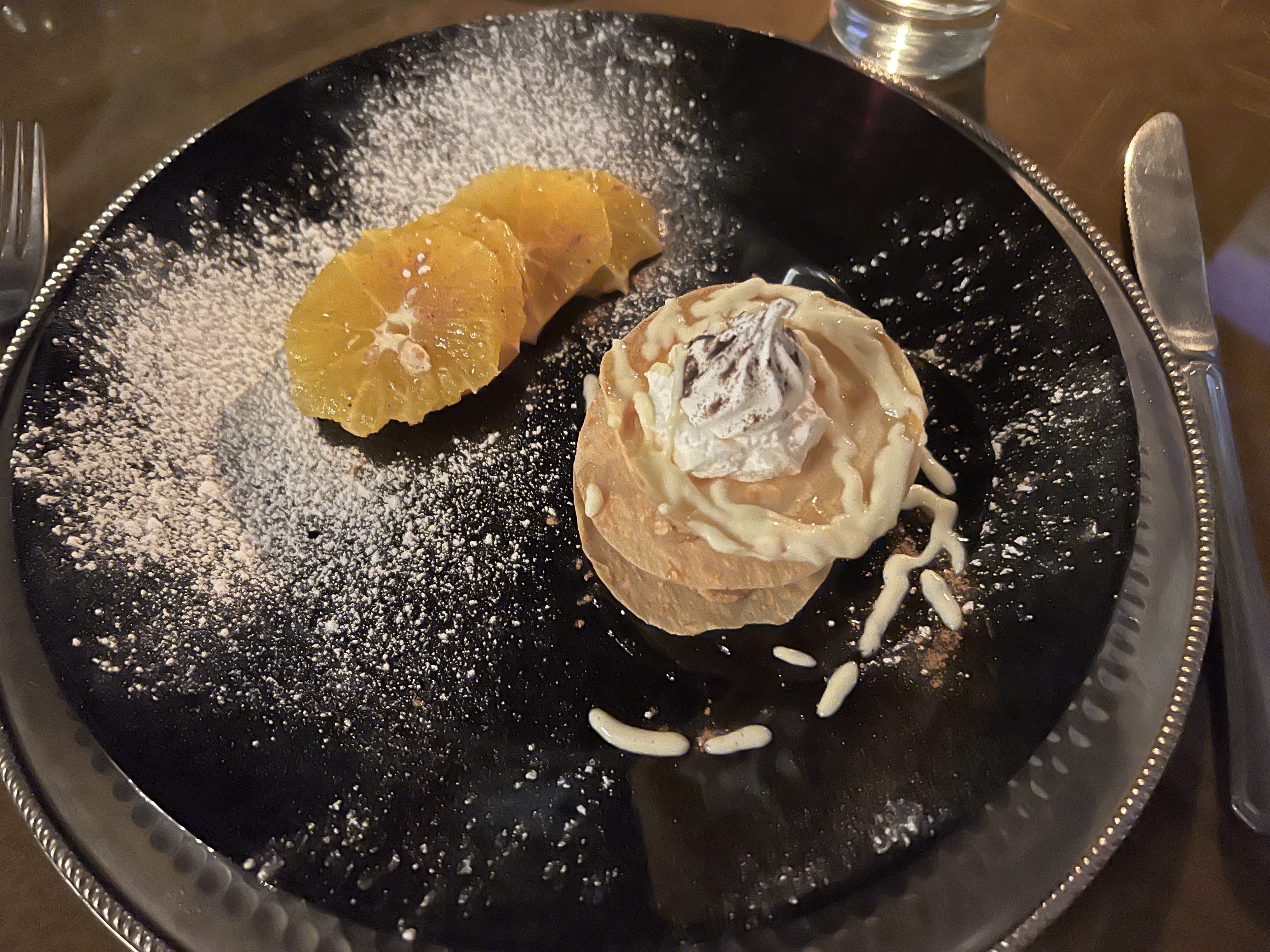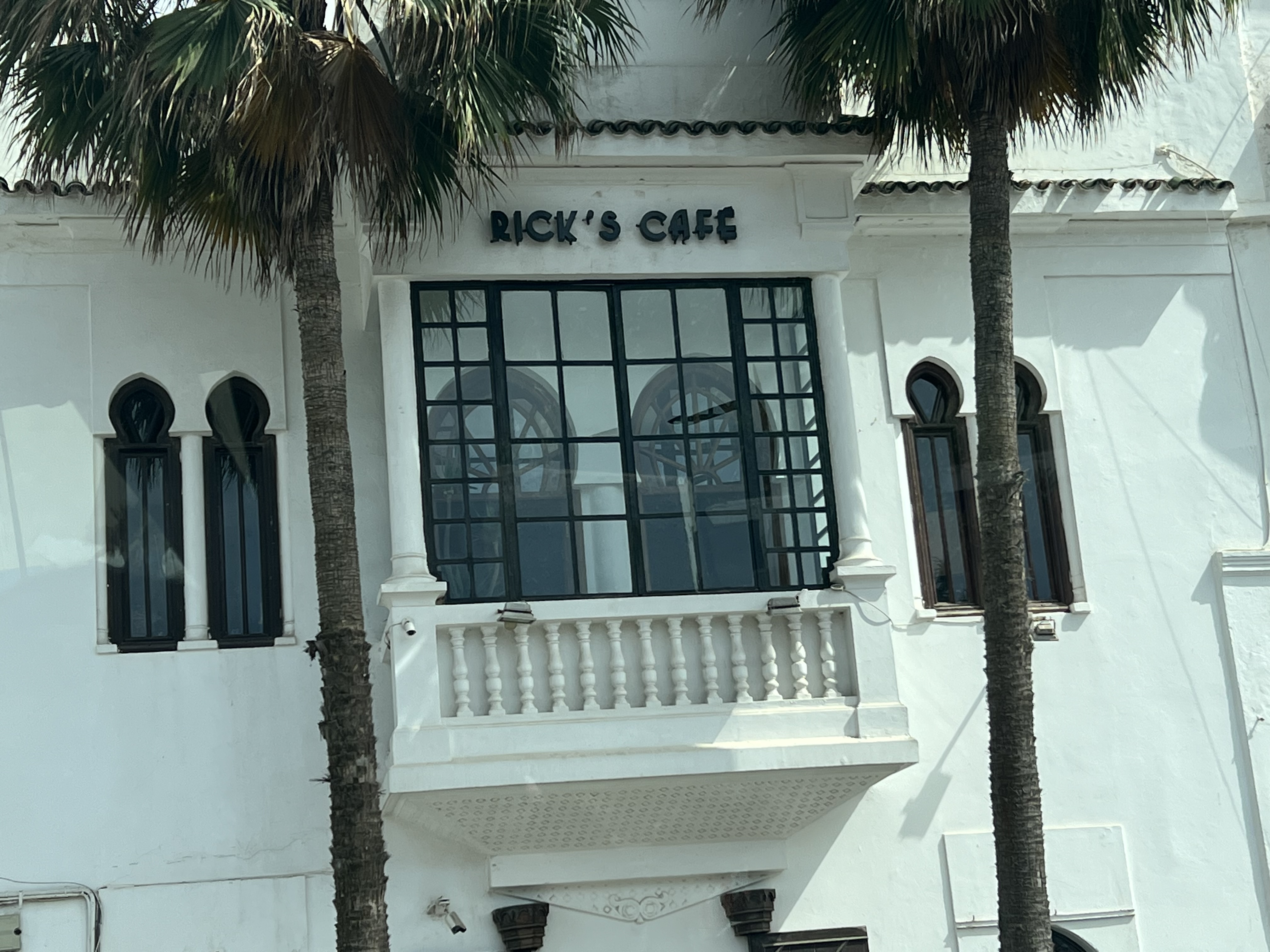
Oh, Casablanca-the romantic Moroccan city of Humphrey Bogart and Ingrid Bergman and Rick’s Cafe. This legendary city was the perfect place to end our Moroccan adventure. When I think of Casablanca, I think romance, intrigue and drama. In reality, Morocco’s largest city is the industrial capital of the country and as hectic and congested as most large cities. Moroccans say everything is made in Casablanca.
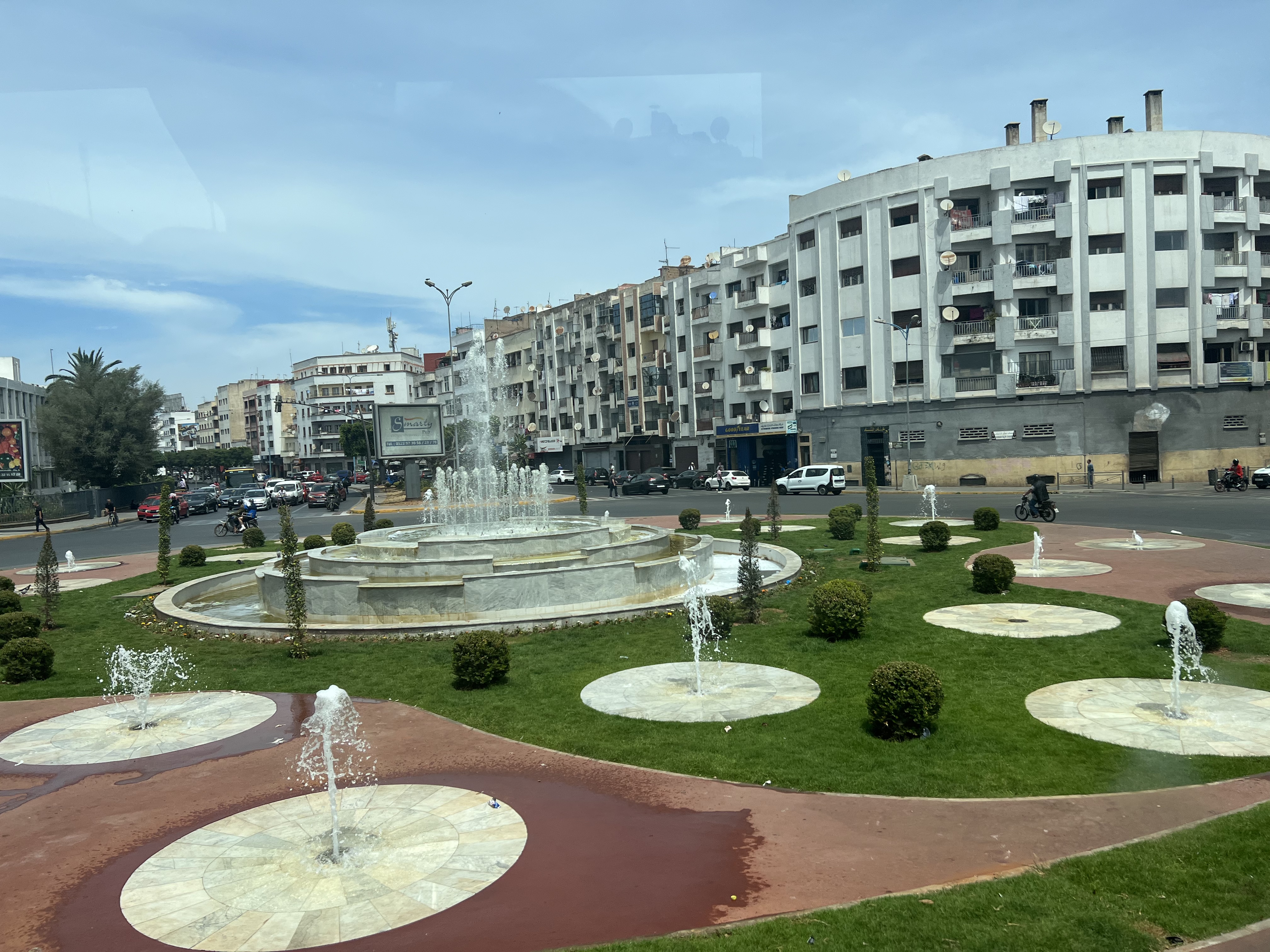
In the day we spent here, we experienced two very different but very wonderful sides of life in Casablanca.
Women’s Solidarity Association
Sex outside of marriage is forbidden in Morocco, and children born out of wedlock are denied many basic rights such as education, healthcare and legal employment. Unwed mothers are frequently banished from their families. We visited the Women’s Solidarity Association, an organization founded in 1985 to help improve rights and opportunities for single mothers and their children.
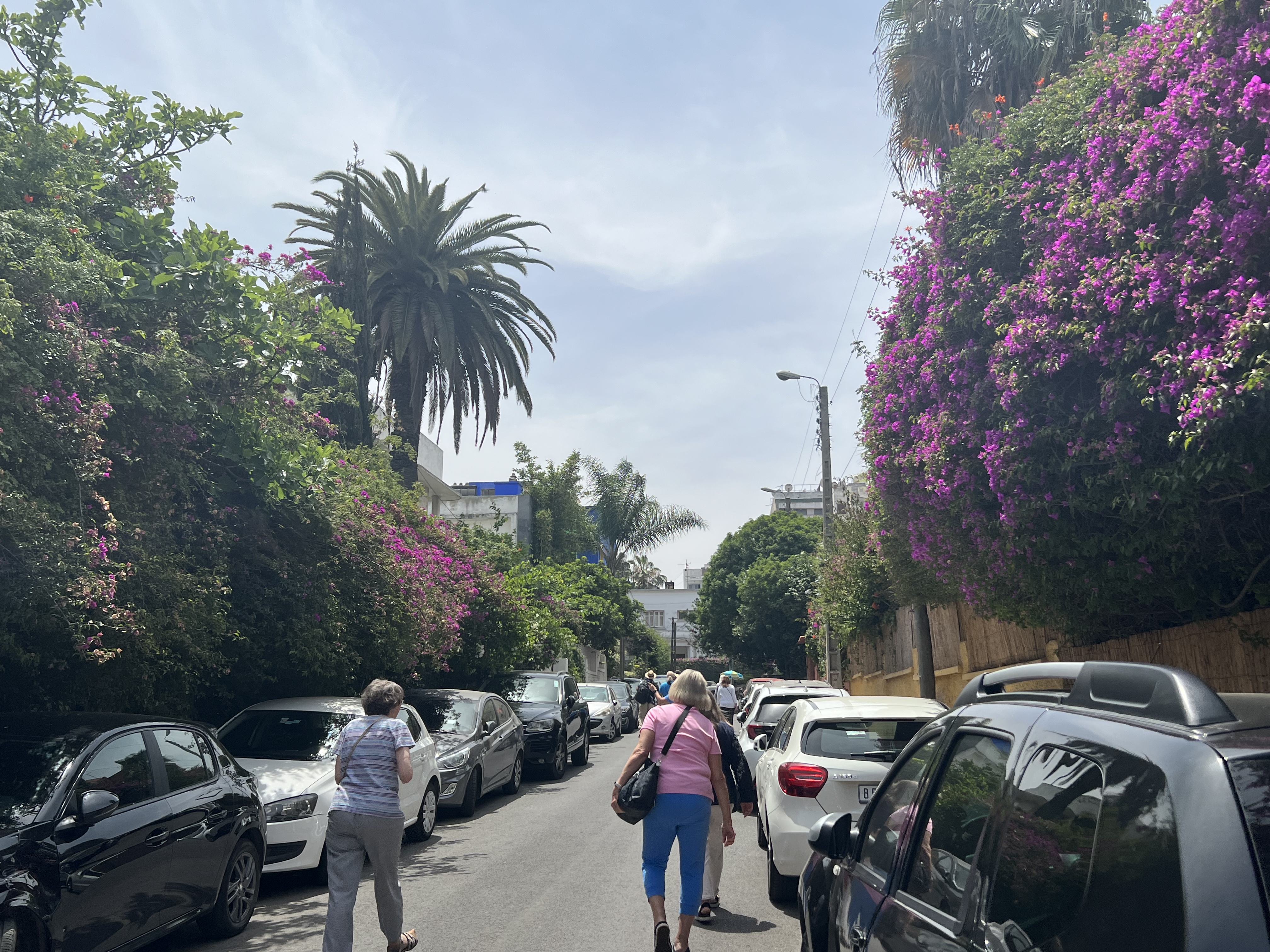
The social worker at the association told us about the services and support they provide women. They help women train for jobs, further their education and find housing and other resources. Perhaps most importantly, they help the women legally register their children so they have the same rights as other citizens.
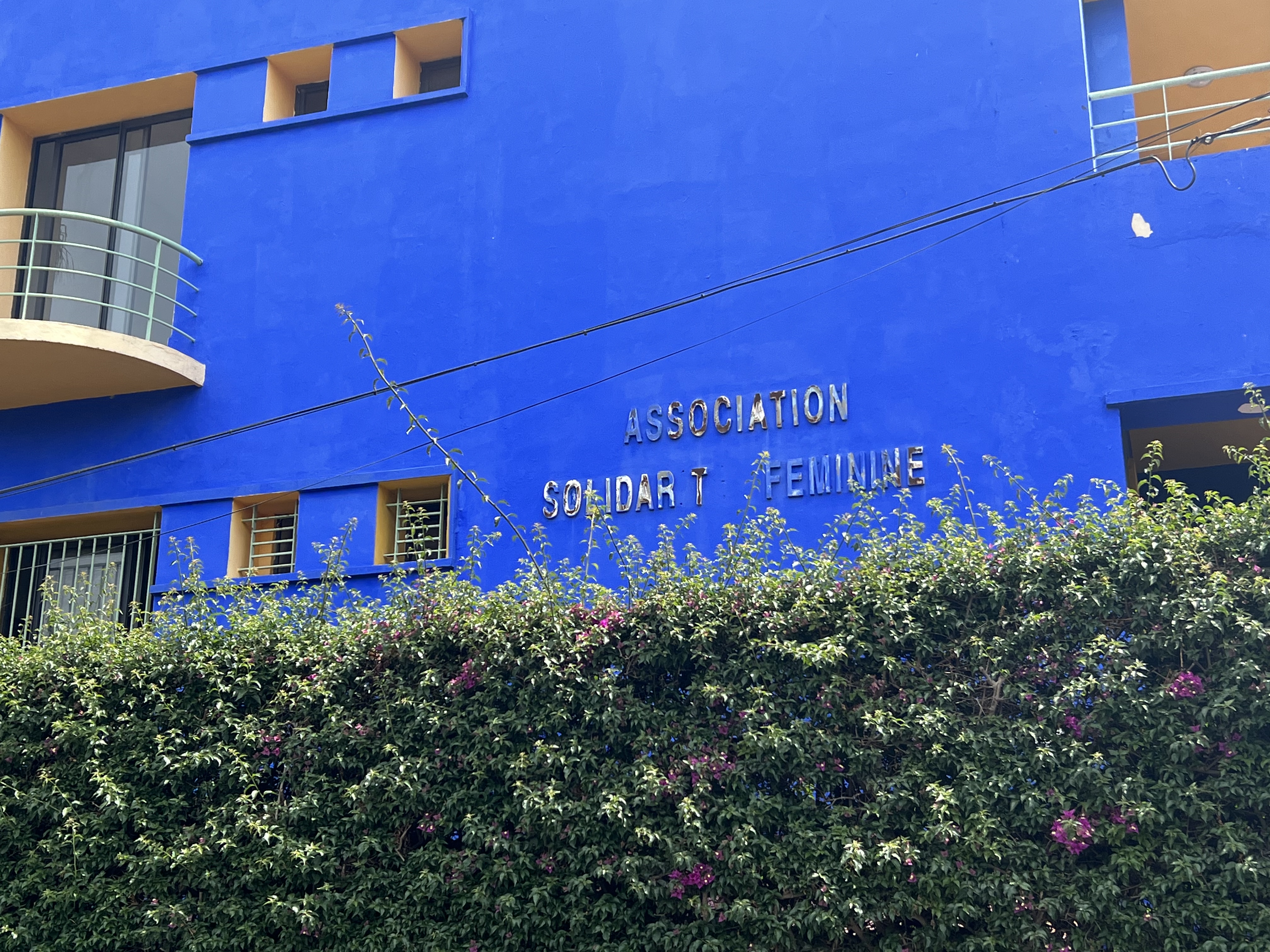
We asked the social worker for an example of a success story, and she told us her story. She was an unwed mother with no options. Thanks to the services of the association, she completed her college degree, her now twenty-five-year old daughter completed her college degree, and she reconciled with her family. Once again, the courage of the women I have met here moved me to tears.
We ate lunch at their on-site restaurant which partially funds the association. They served us seffa, a dish of sweetened couscous or vermicelli with butter, cinnamon, and almonds. Mine had a wonderful vegetable mixture on the bottom. Everyone else had chicken on the bottom of theirs. It was delicious.
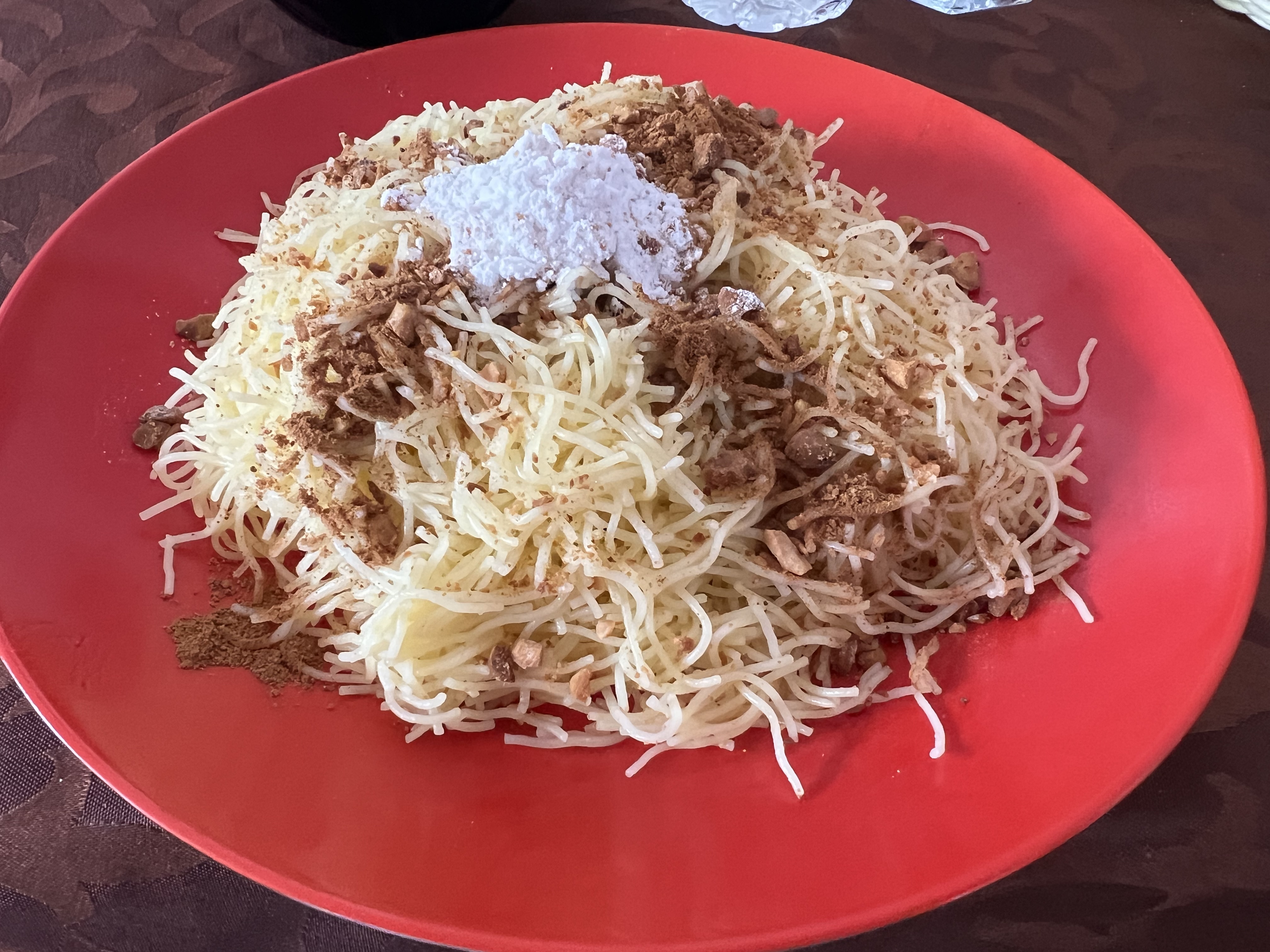
Hassan II Mosque
Non-Muslims are not able to enter mosques in Morocco, so before today we had only seen the outsides of mosques. Allowing visitors during non-prayer times, the Hassan II Mosque in Casablanca is an exception. Visiting the mosque was the perfect capstone experience to our amazing Moroccan adventure.
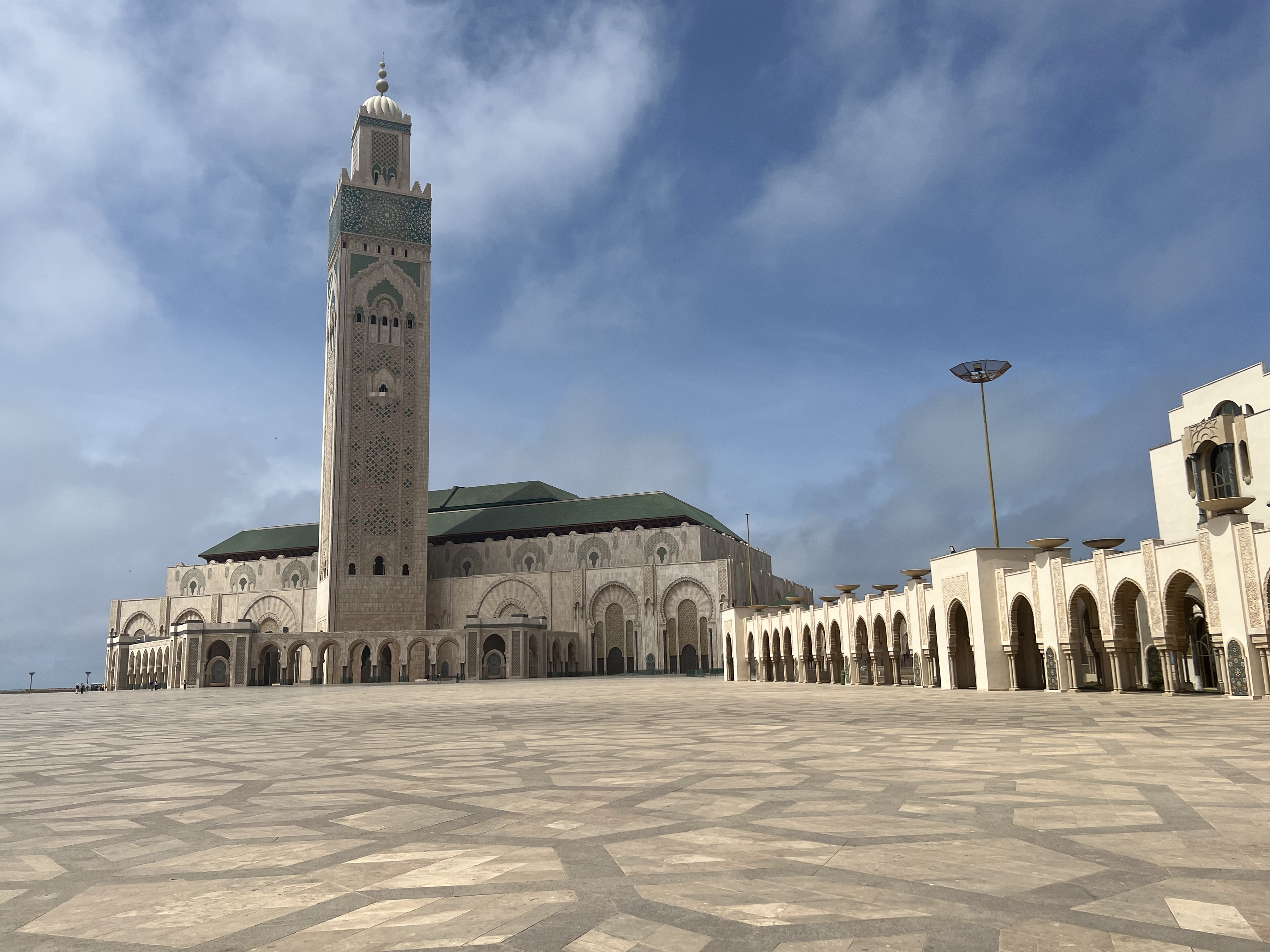
The Hassan II Mosque is the largest functioning mosque in Africa and the seventh largest in the world. At 689 feet, its minaret is the tallest in Morocco and the second tallest in the world. And it is absolutely gorgeous!
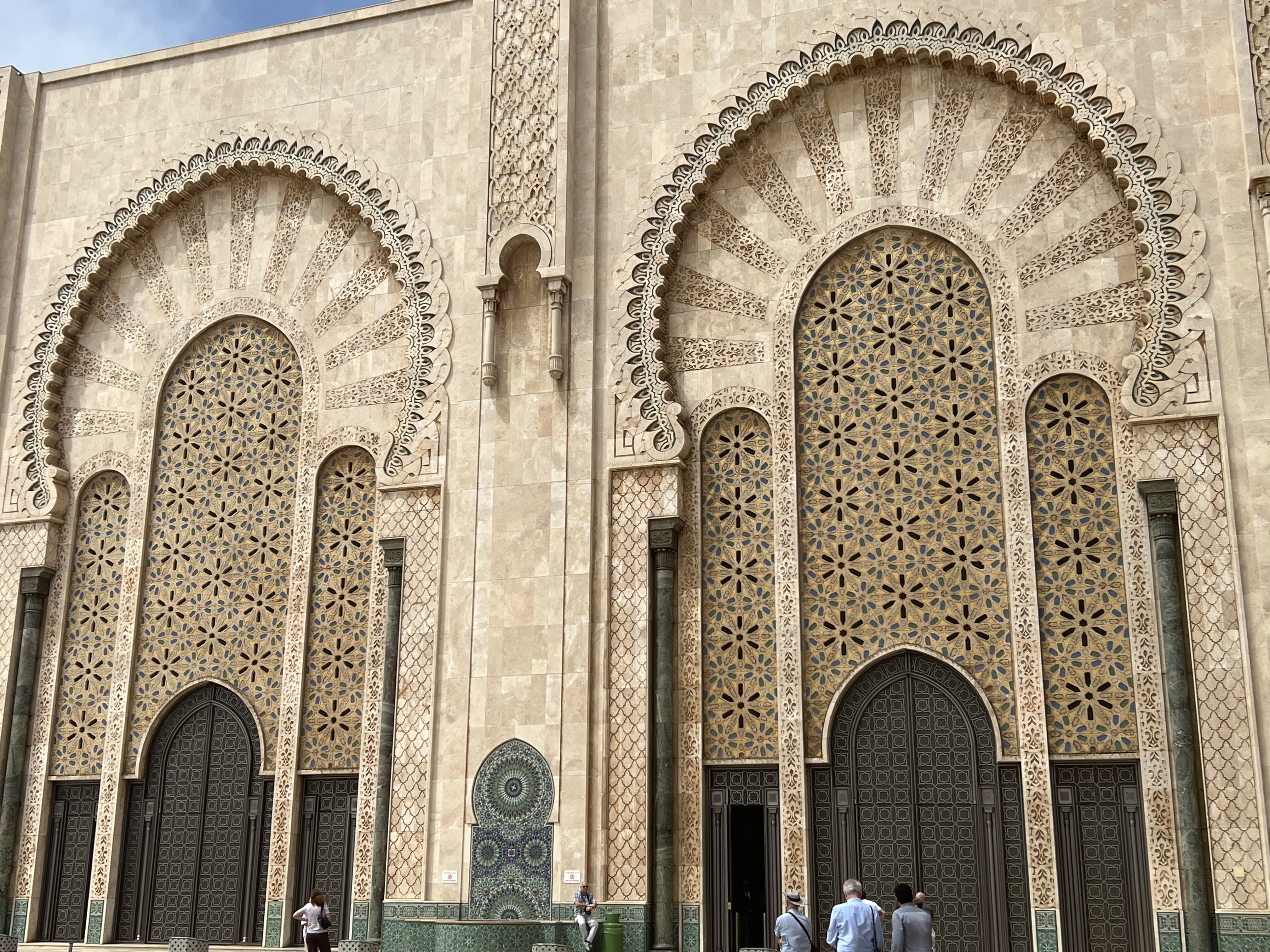
The only non-Moroccan involved in the project was a French architect who converted to Islam. The 700 million-dollar project took six years to complete with everyone working 24/7.Twenty-five thousand worshipers can gather at one time.
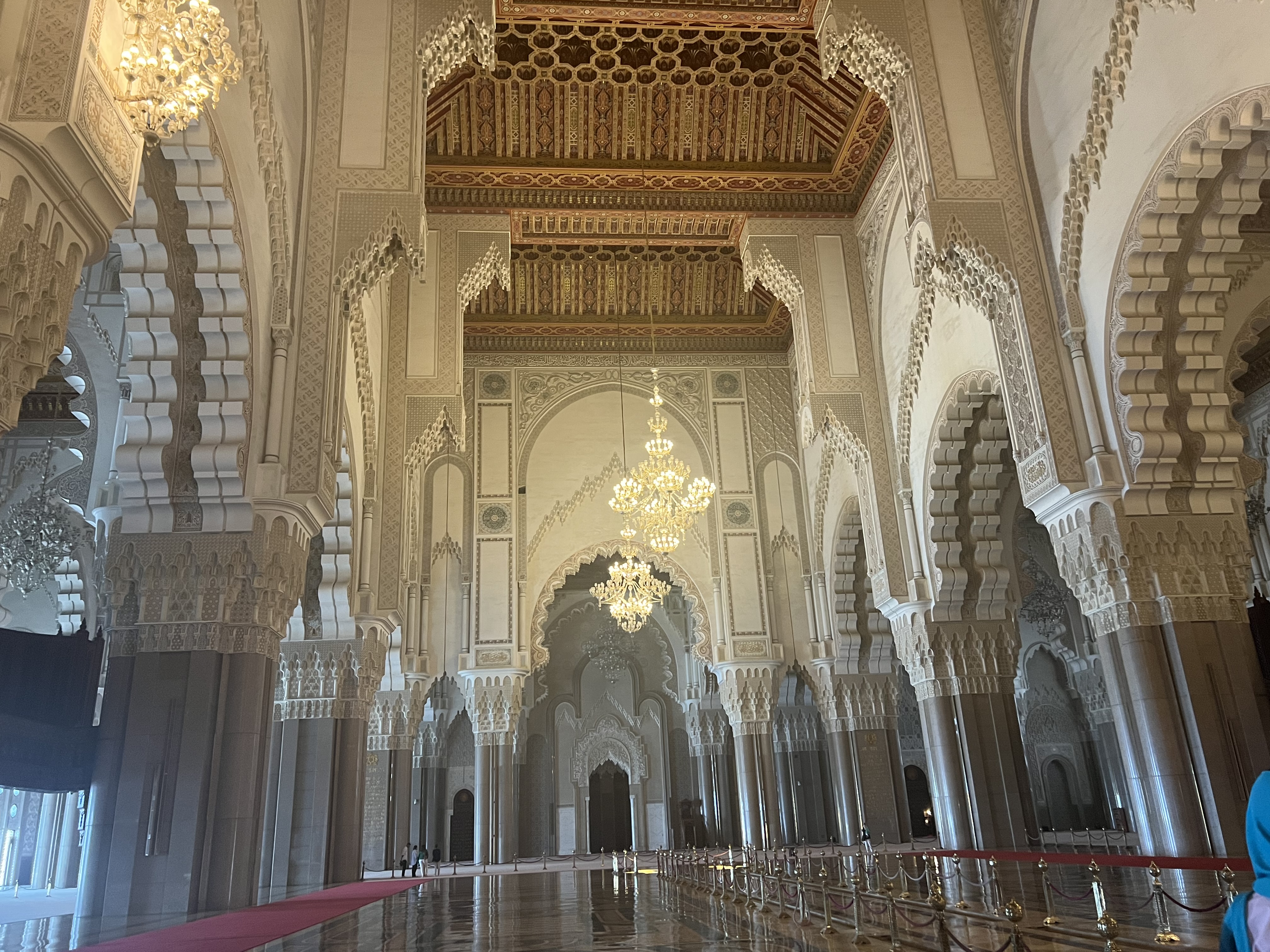
Although not required of visitors, we covered our heads before entering as a sign of respect. All visitors remove their shoes and carry them in provided bags.
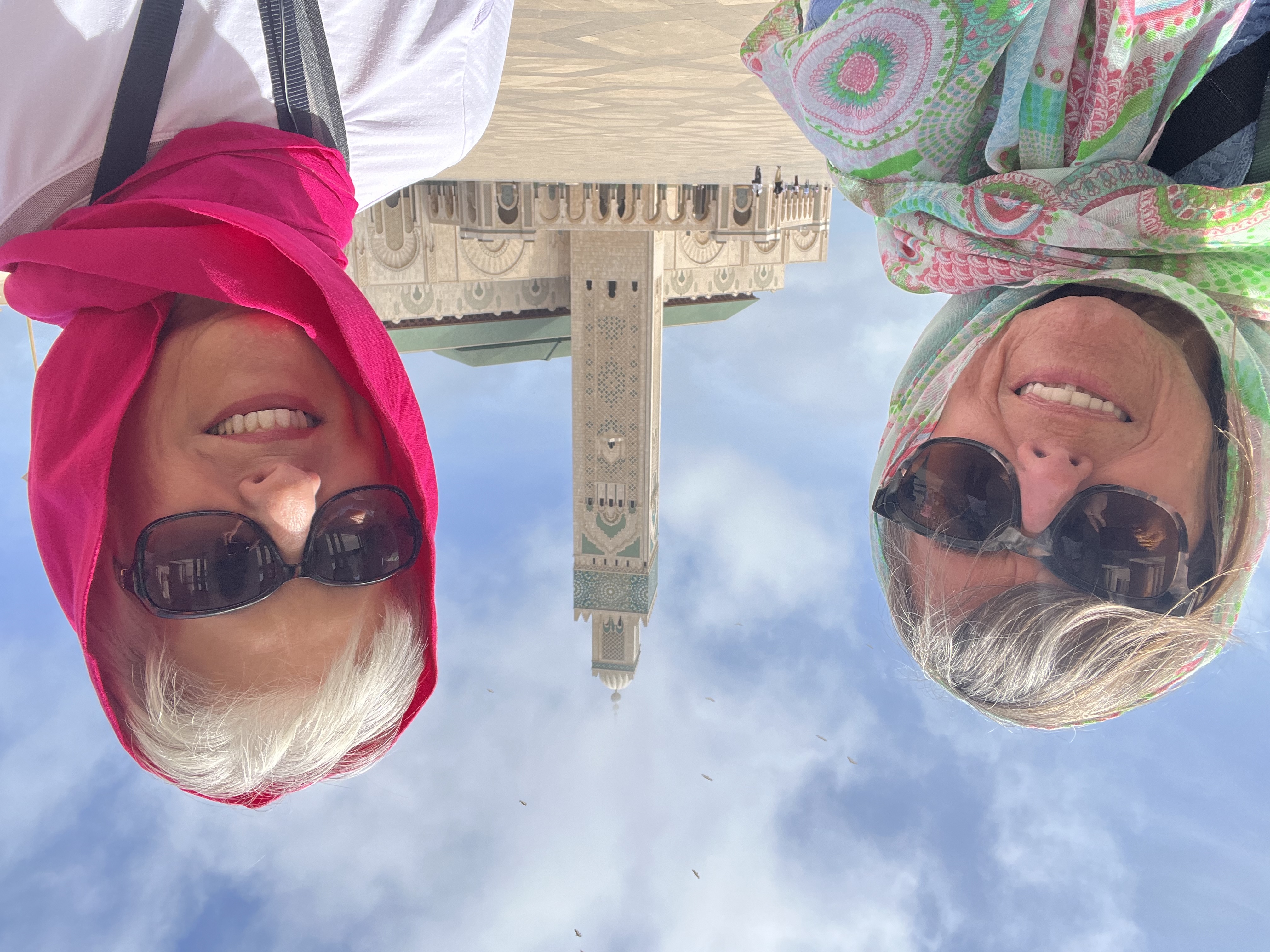
The men pray on the main floor, lined up in rows with their toes touching. The women pray in mezzanines on each side of the mosque.
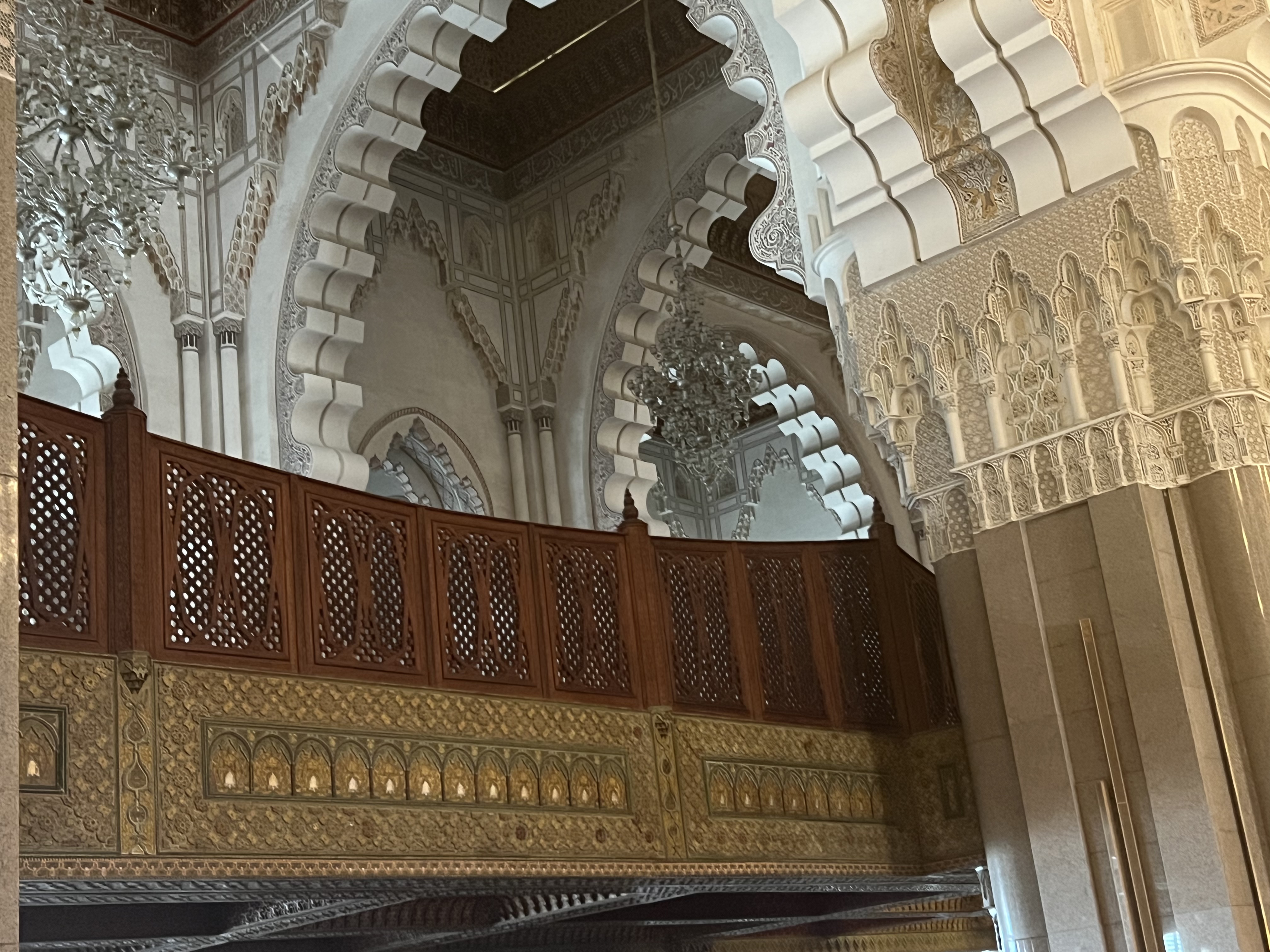
When the King prays in the mosque a huge door is open and he is in line with the Imam.Other worshipers may pray when he is there by invitation only.
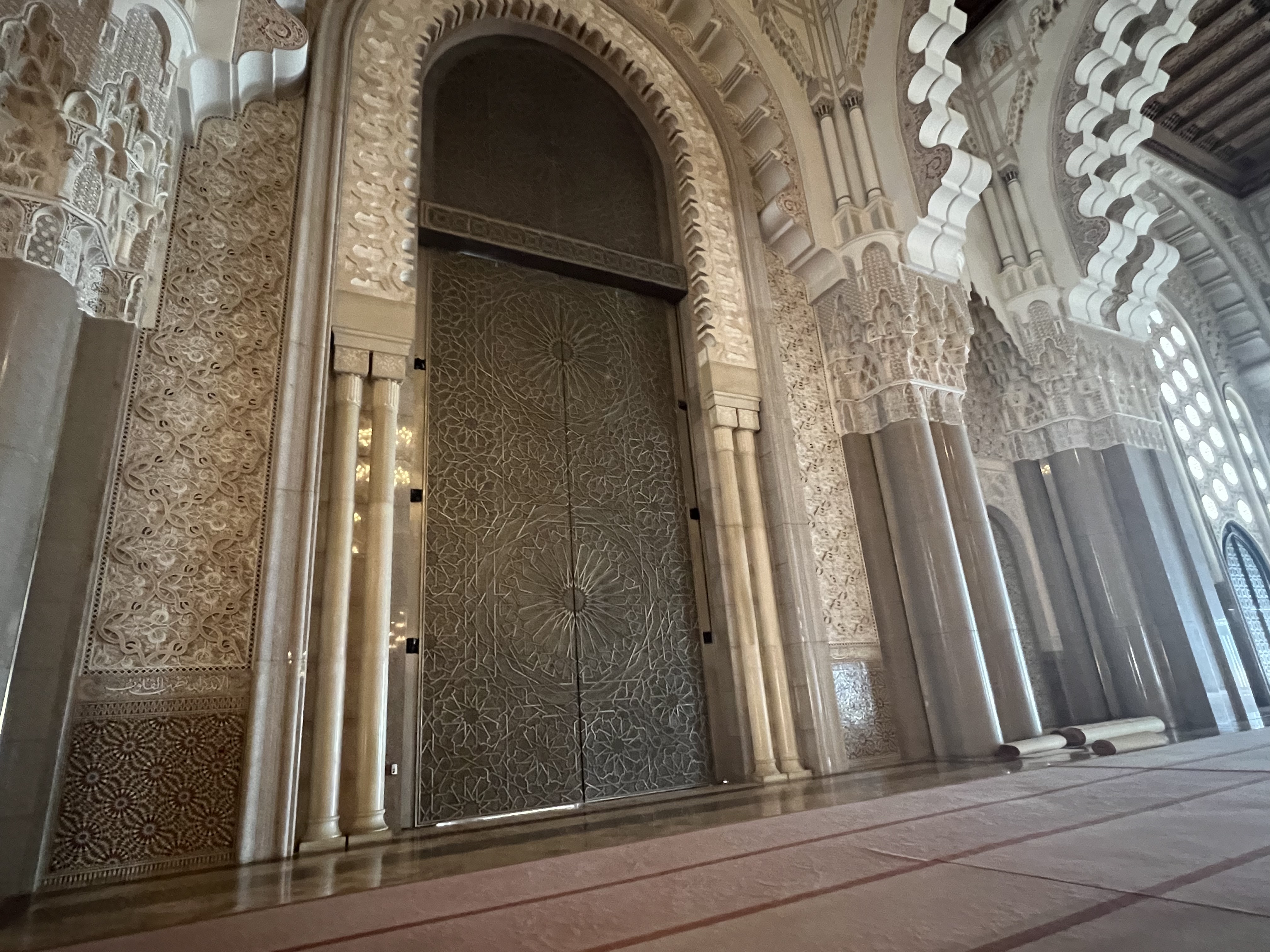
We went downstairs to the ablutions hall. Muslims must either cleanse themselves at home or at the mosque before praying.
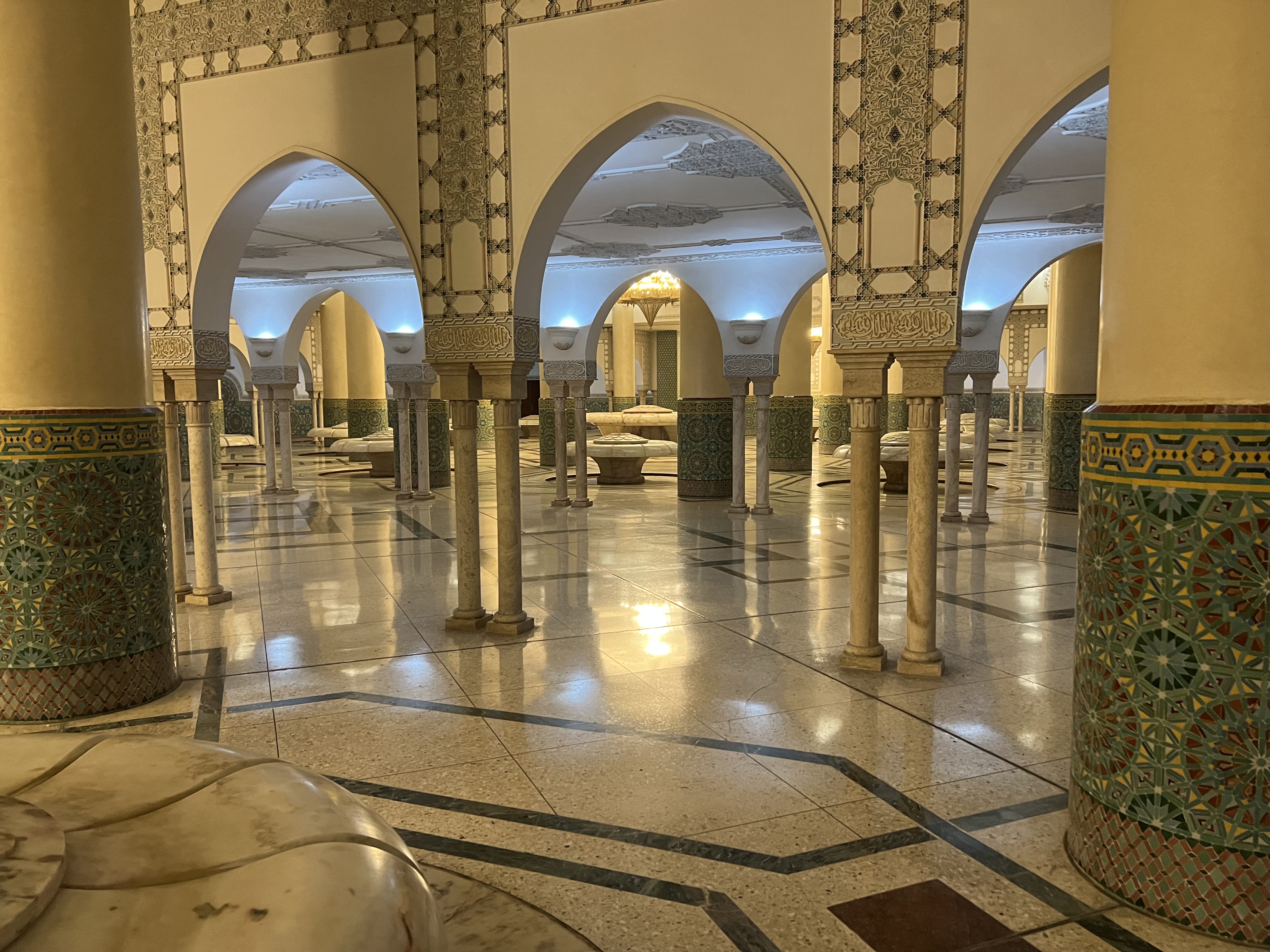
The ablution hall houses 45 marble fountains that represent lotus flowers and a total of 600 taps.
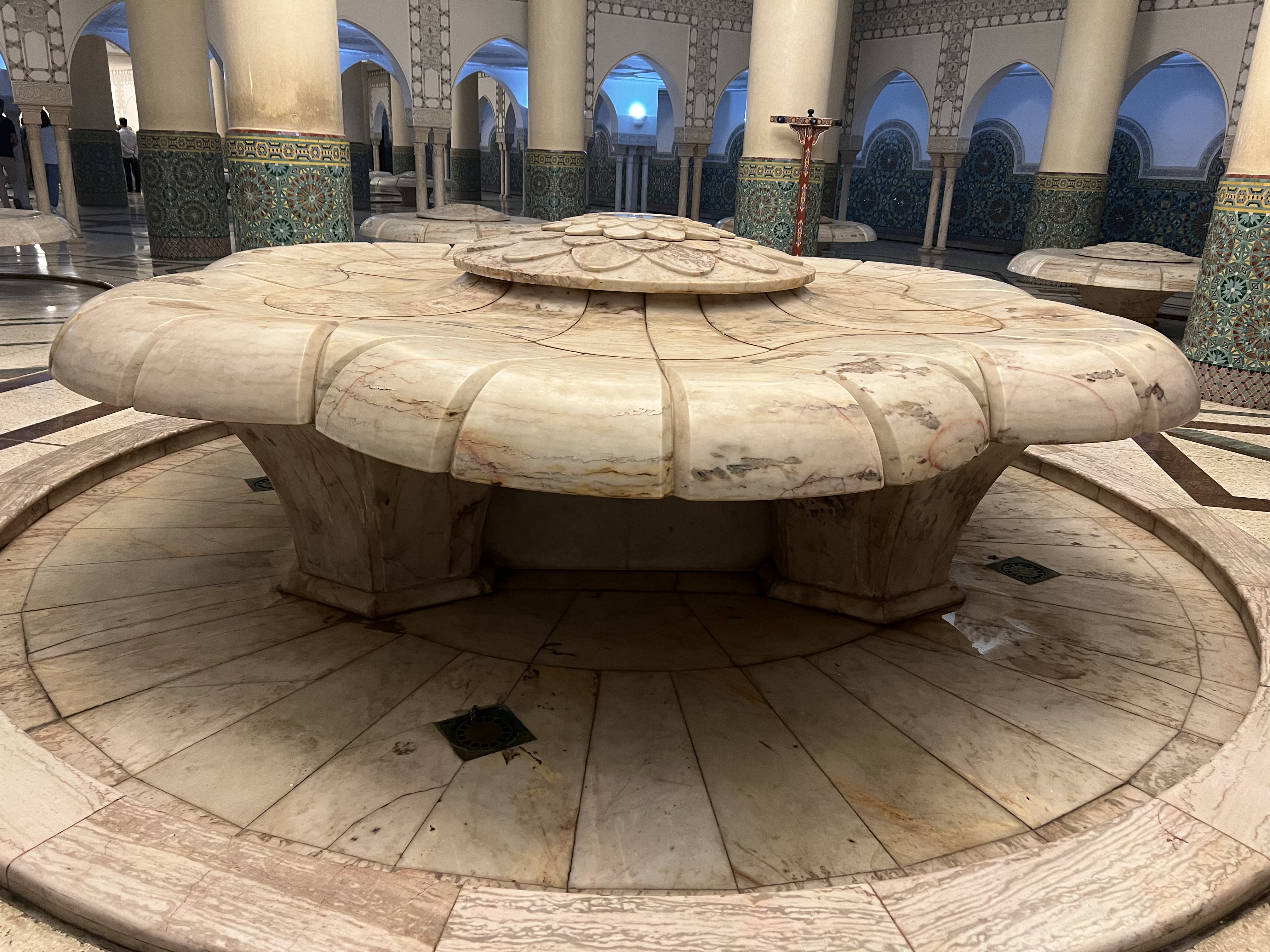
Casablanca to Home
Early tomorrow (very early-3:30 am) Jeanne and I leave for home. As I always feel at the end of a great trip, I am sad to leave but happy to be going home. This trip has been such a learning experience that I need some time to think about the experiences, the people and the new information. Without a doubt, the highlight of the trip was the wonderful people we met. Warm, welcoming, and generous, the Moroccan people made this trip the special experience that it was. Jeanne and I agree we are leaving this trip more inspired and more hopeful about the world.
